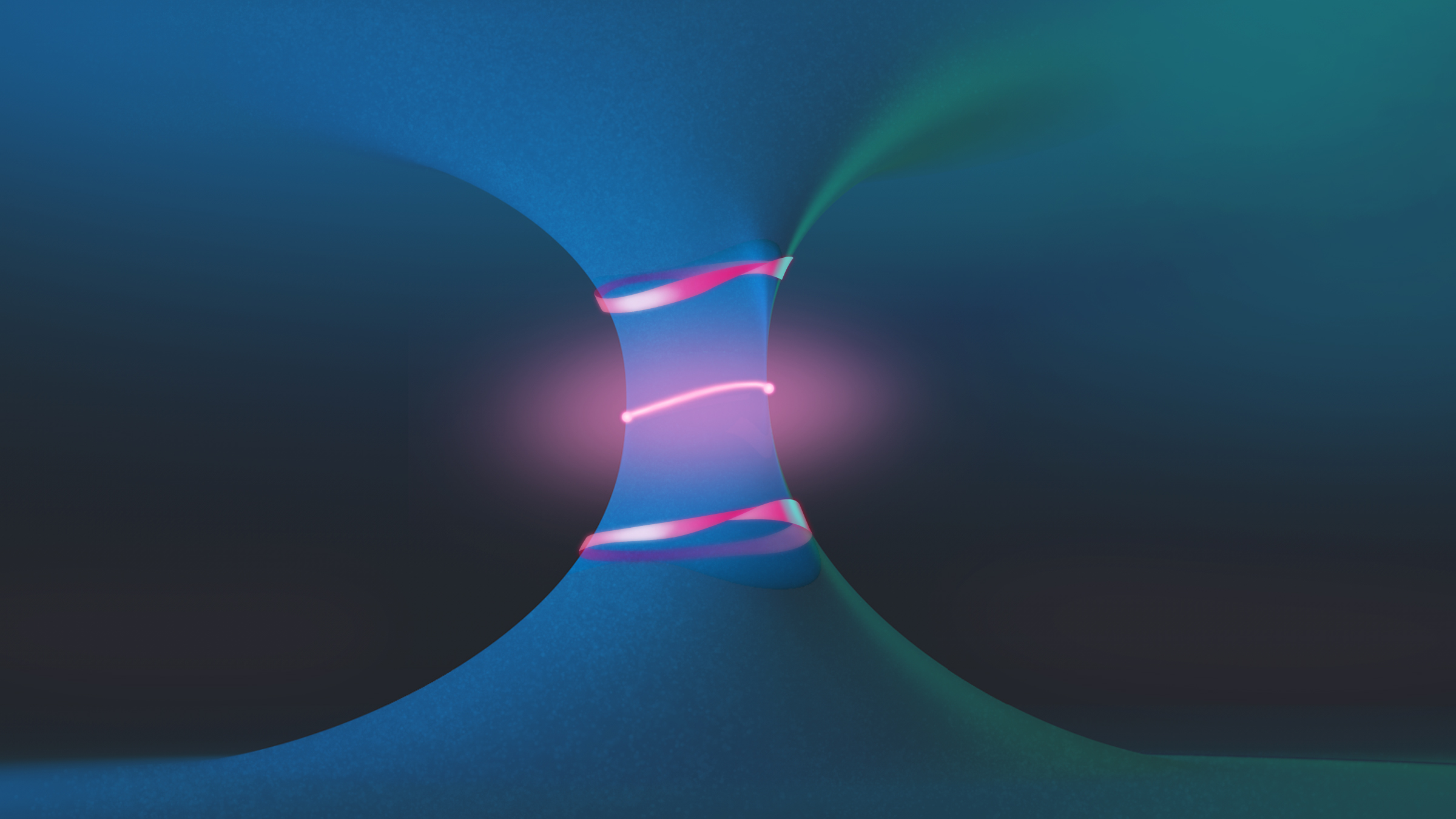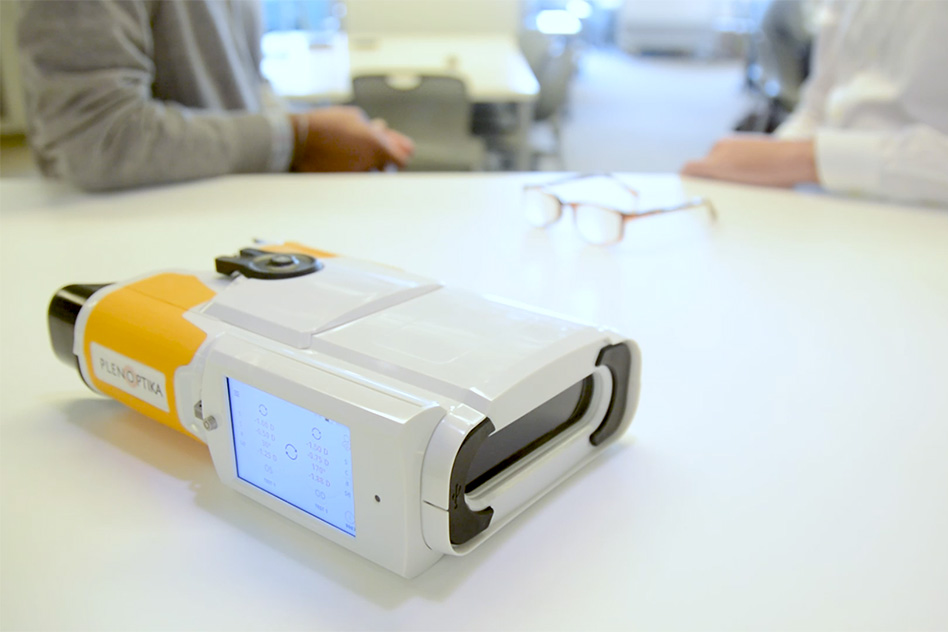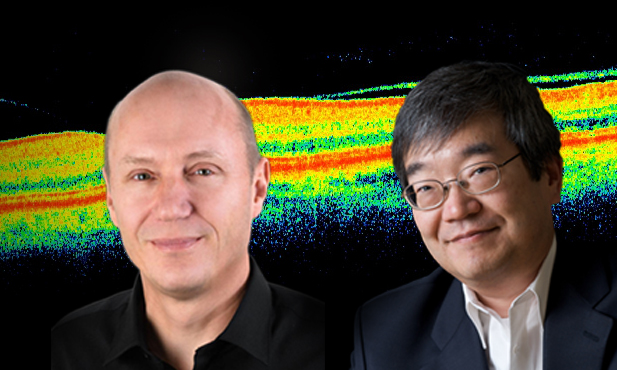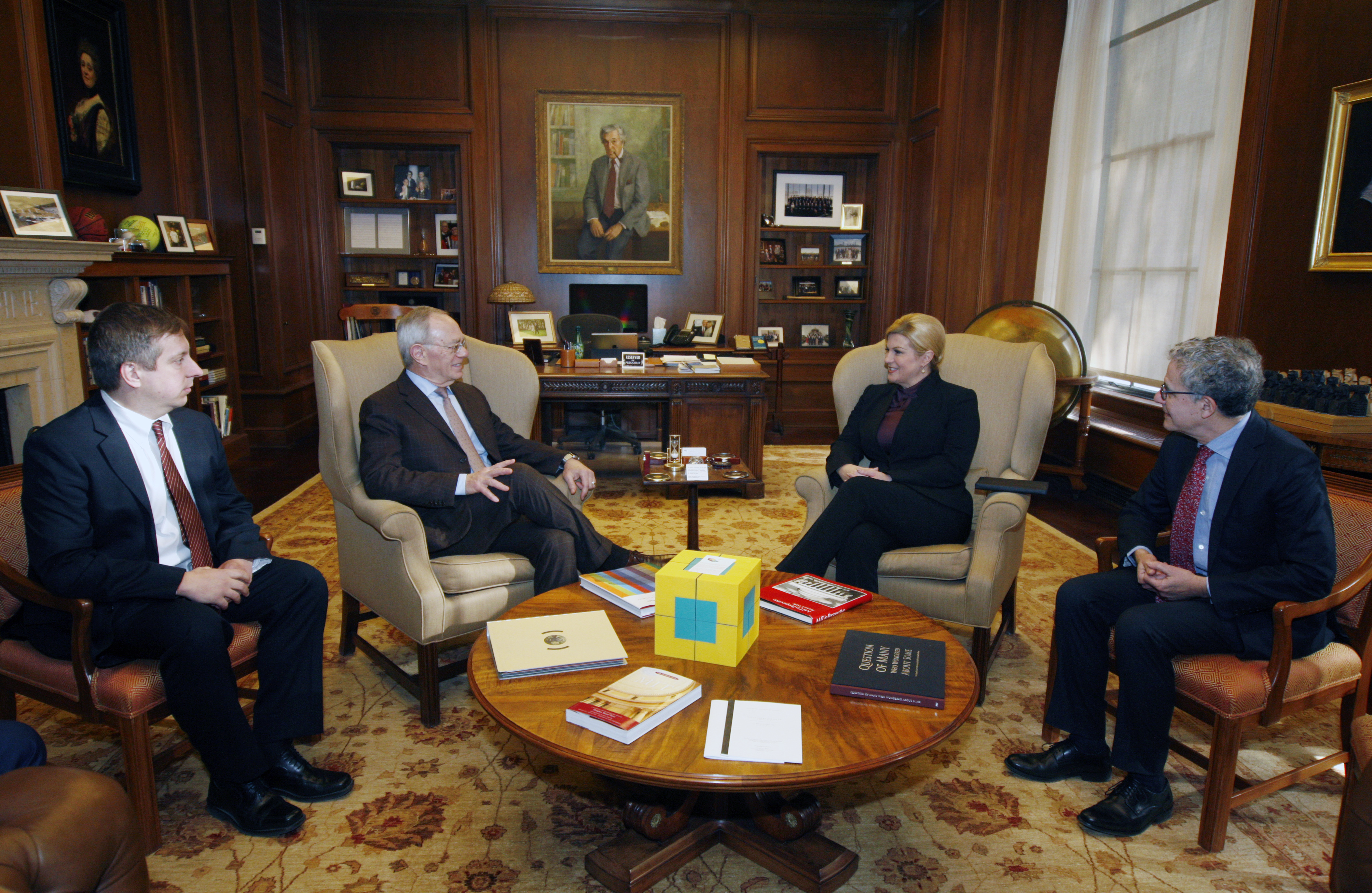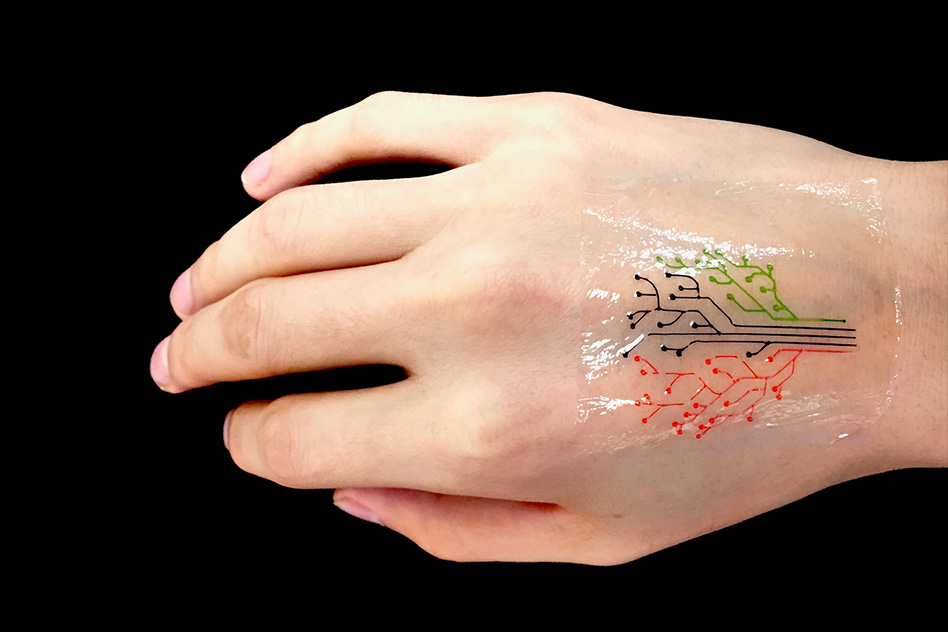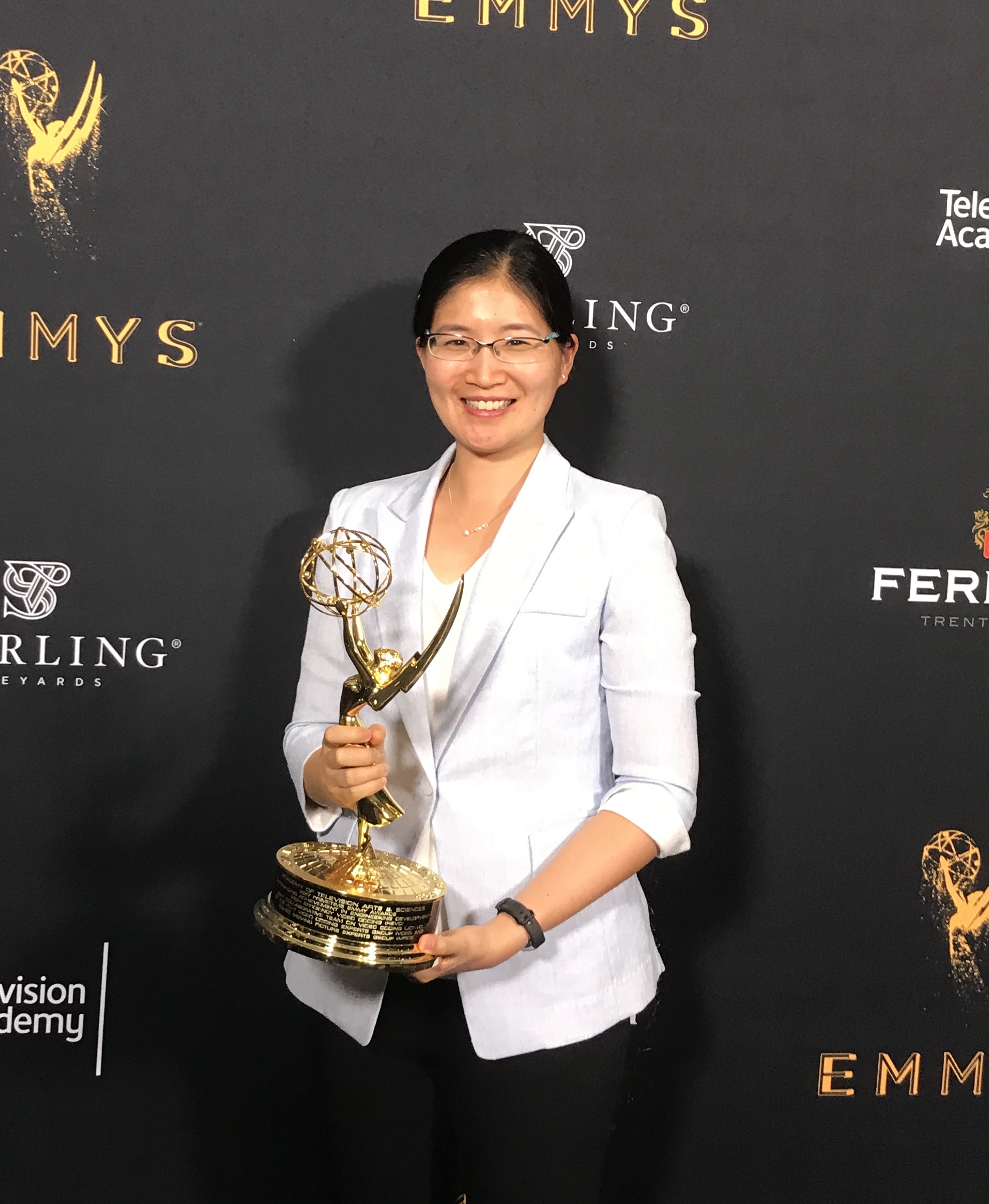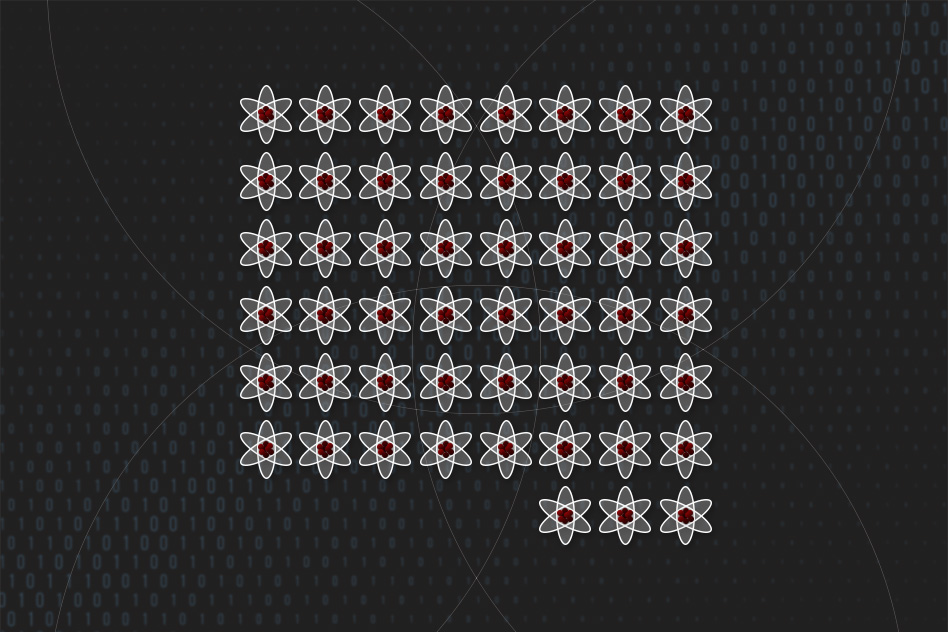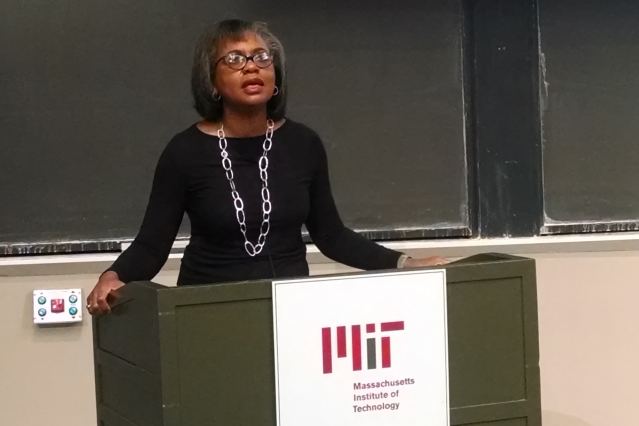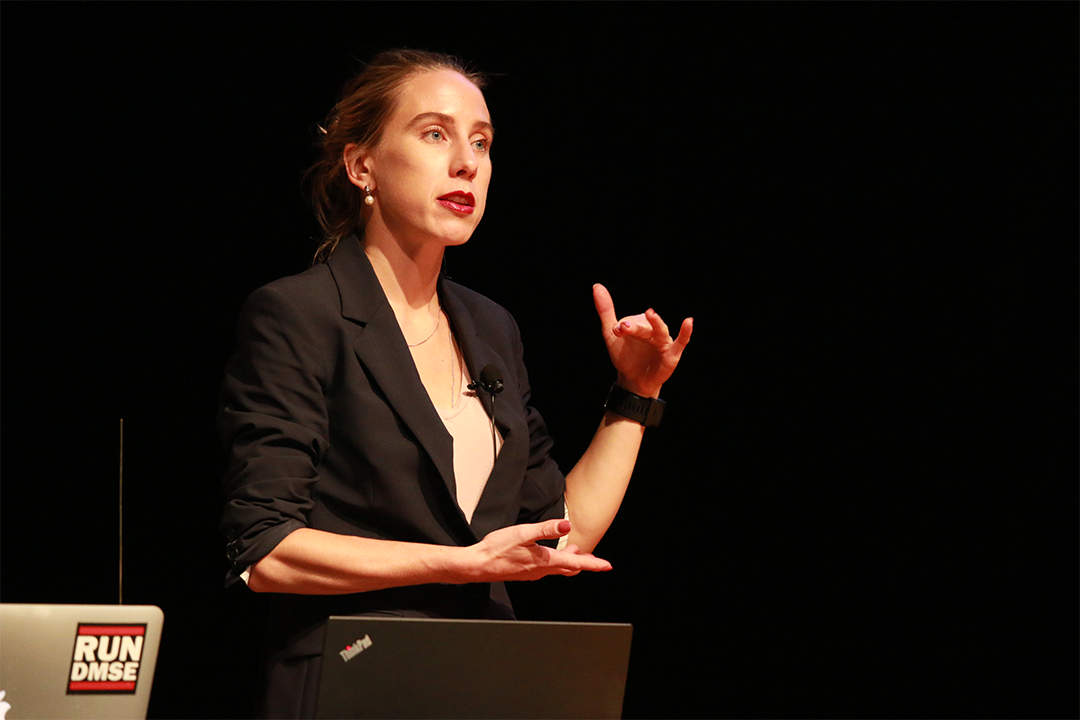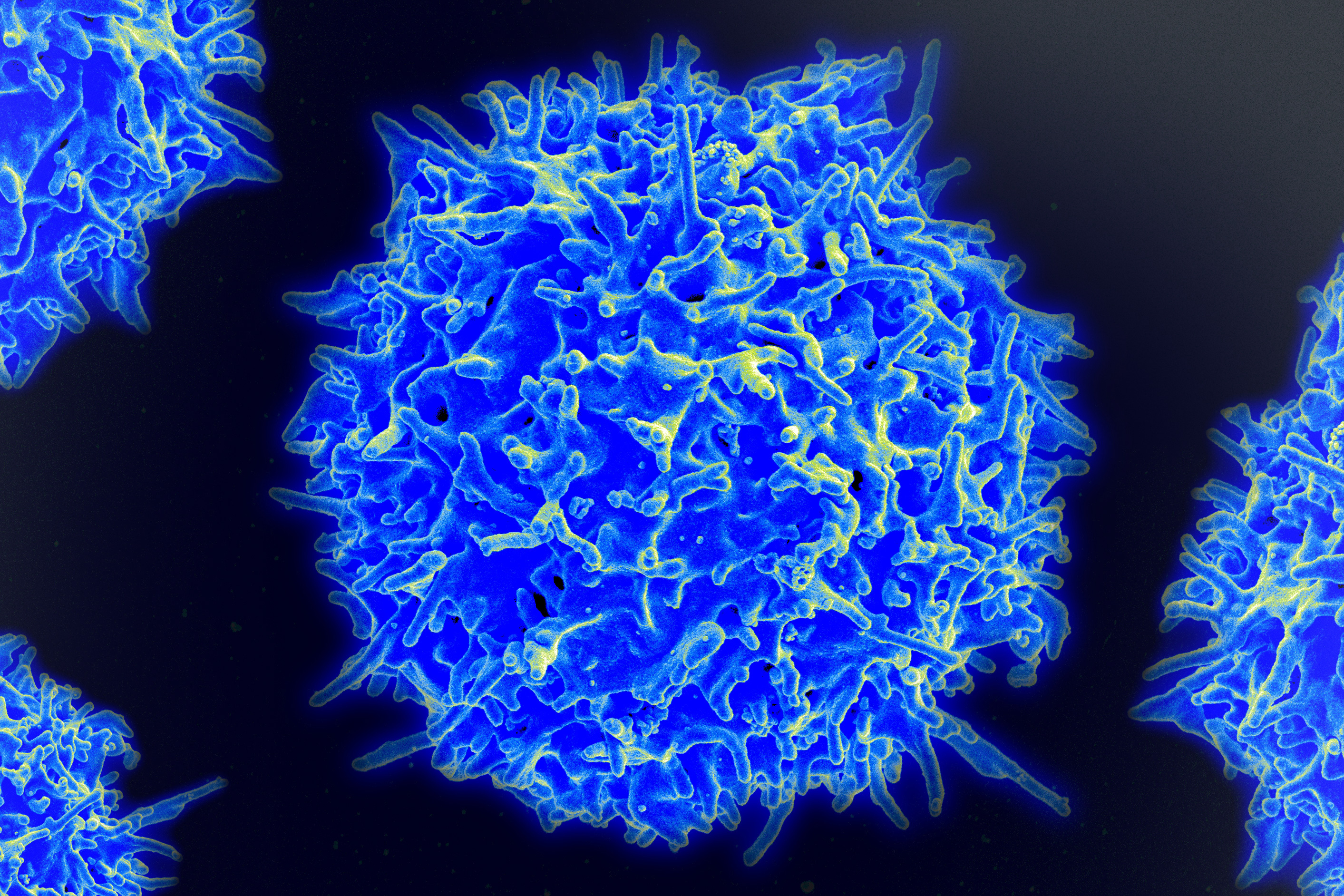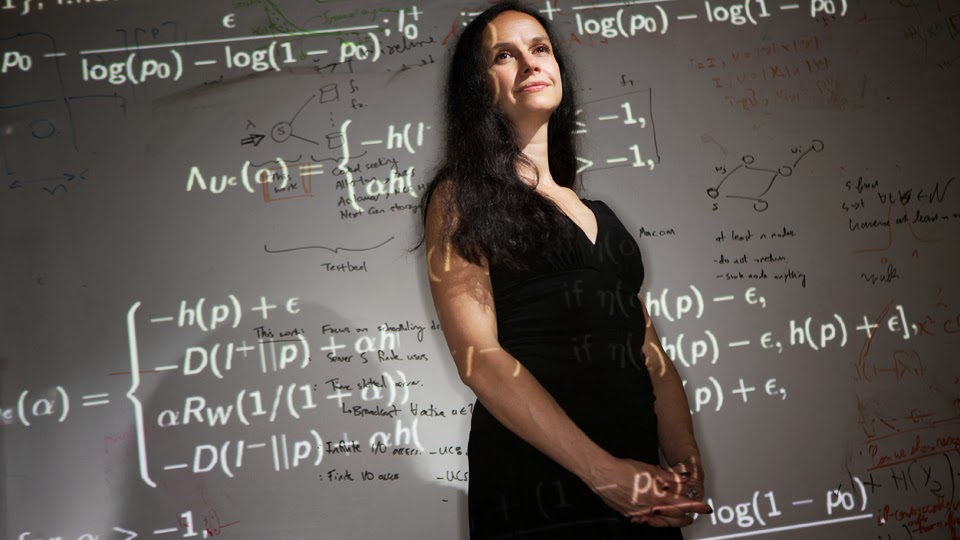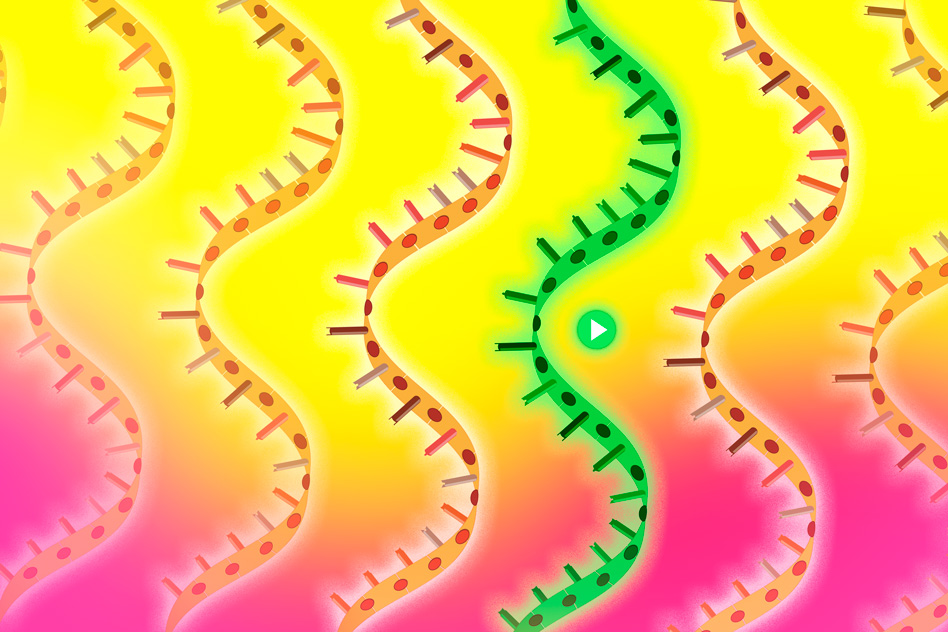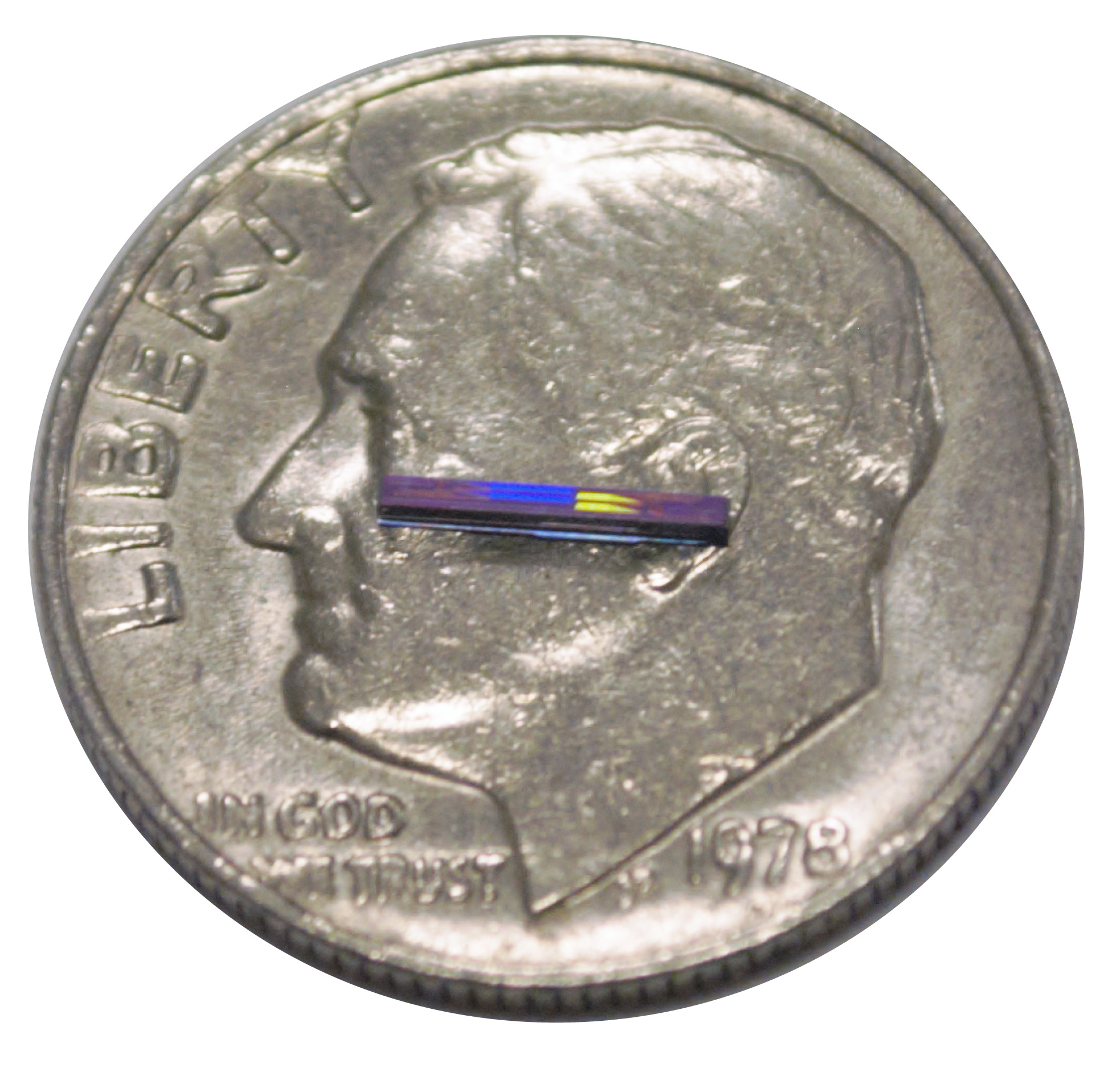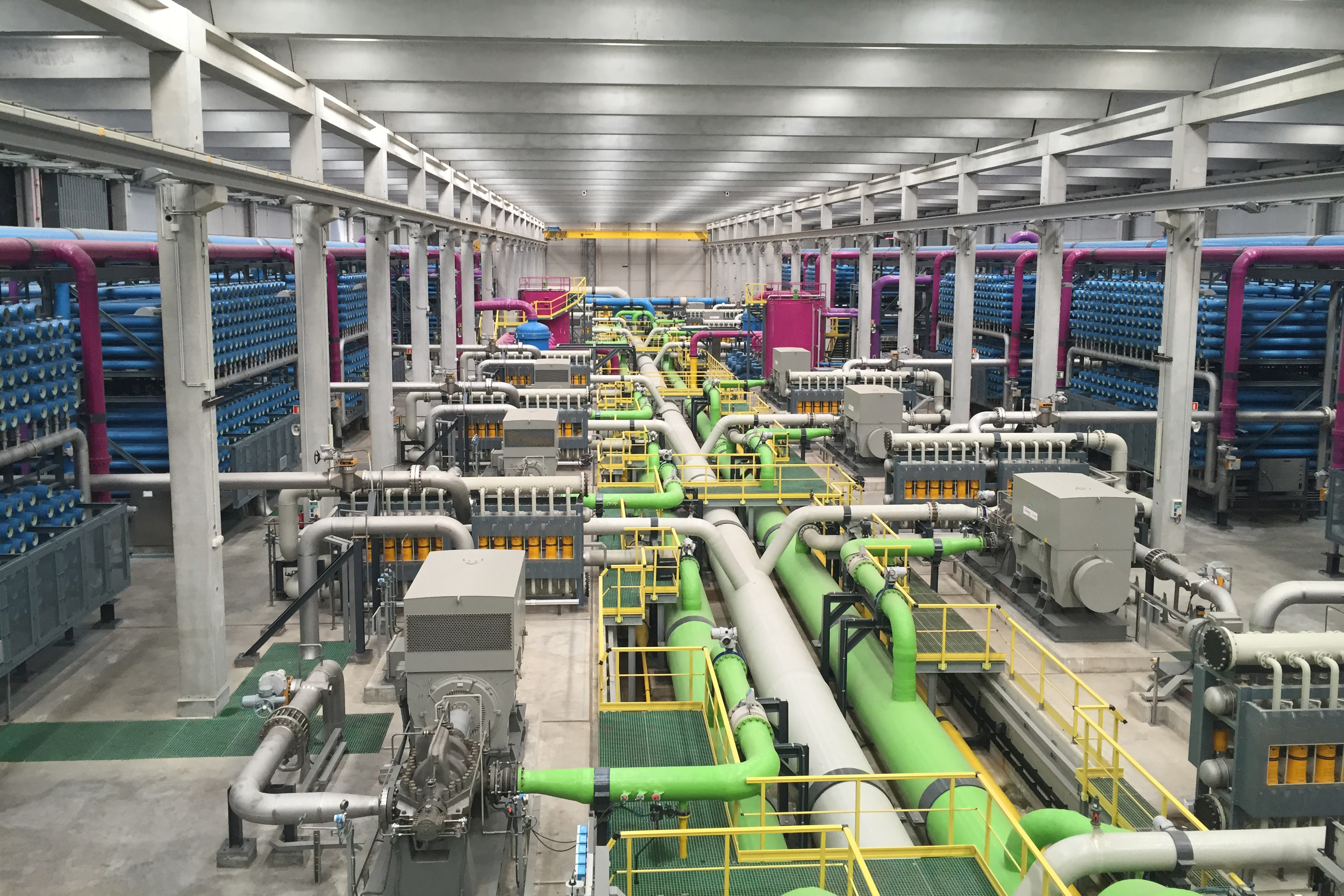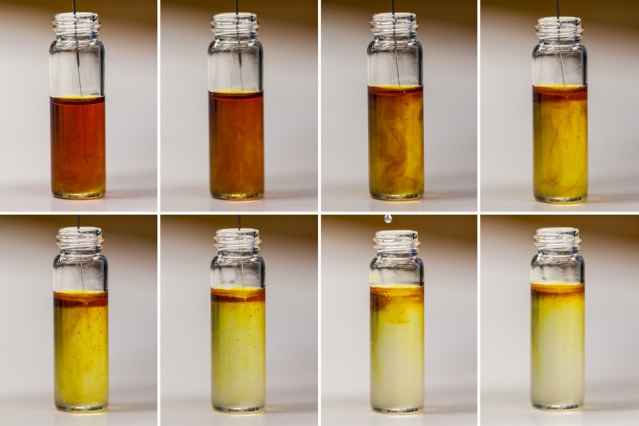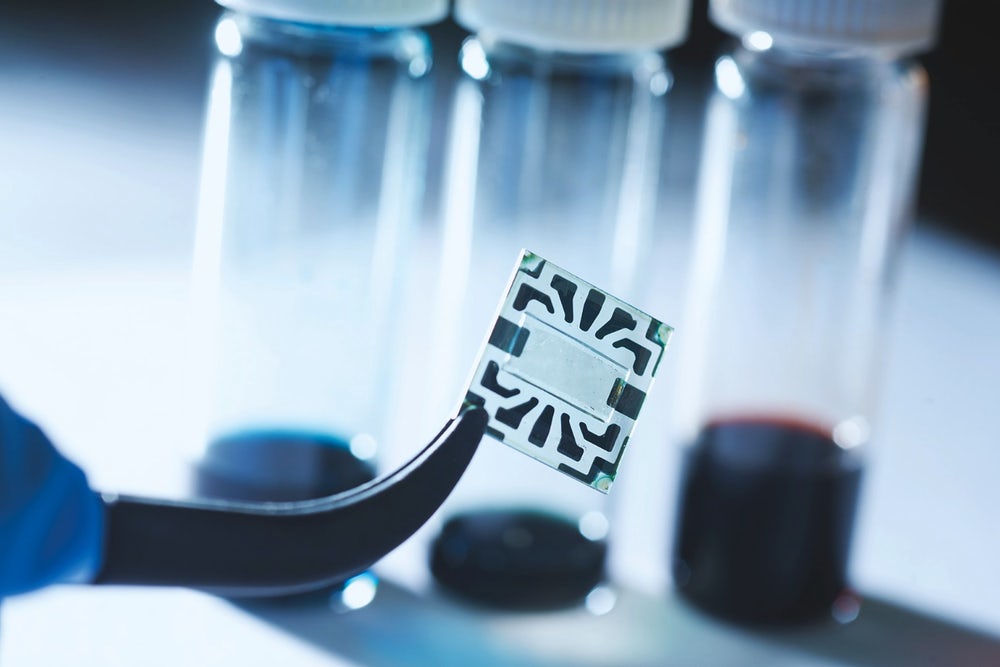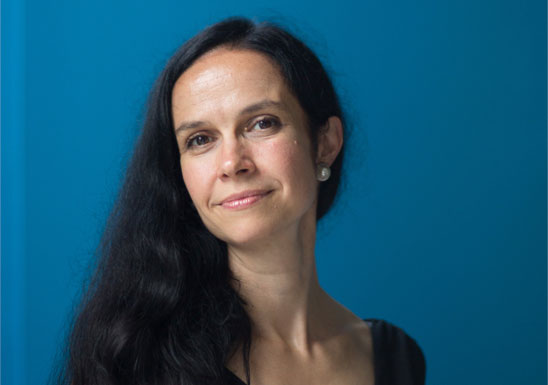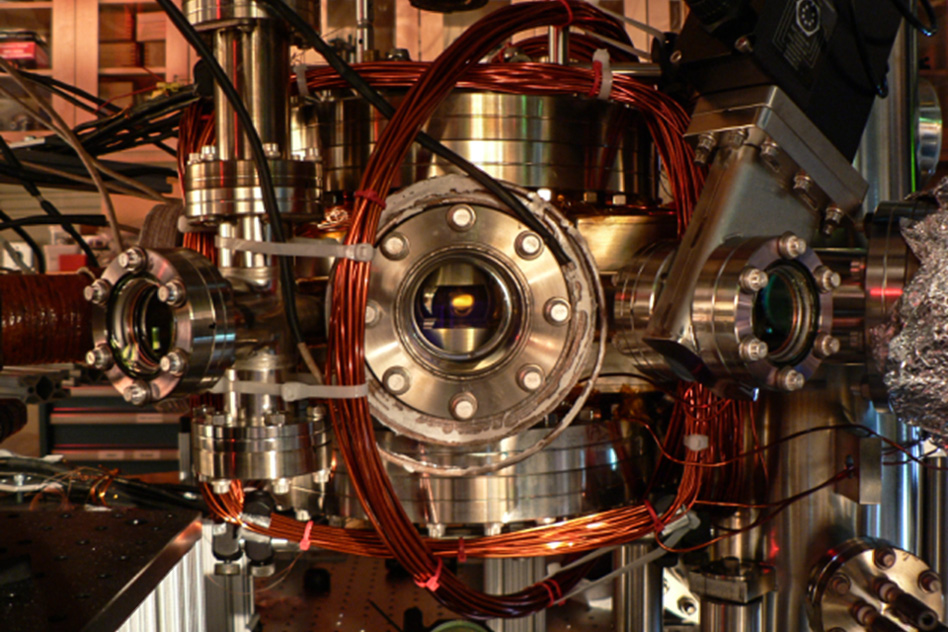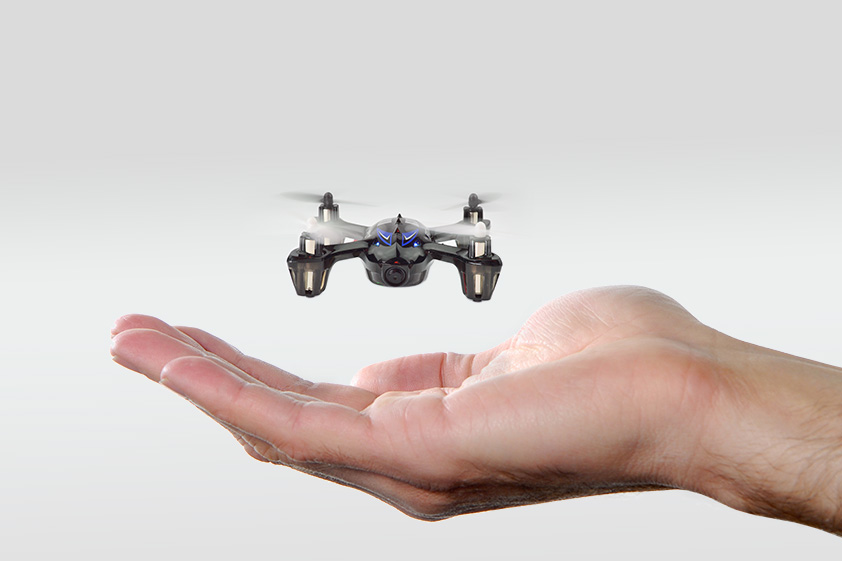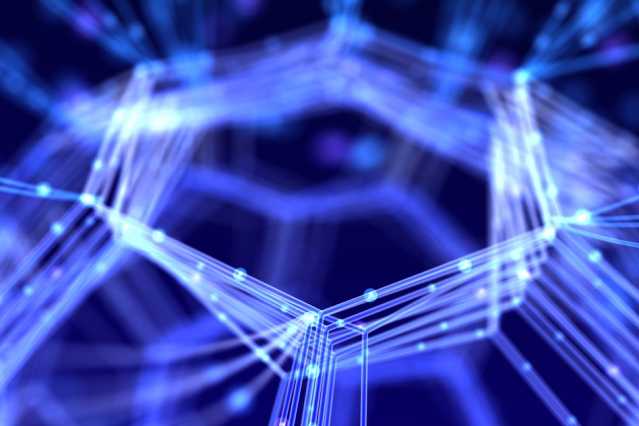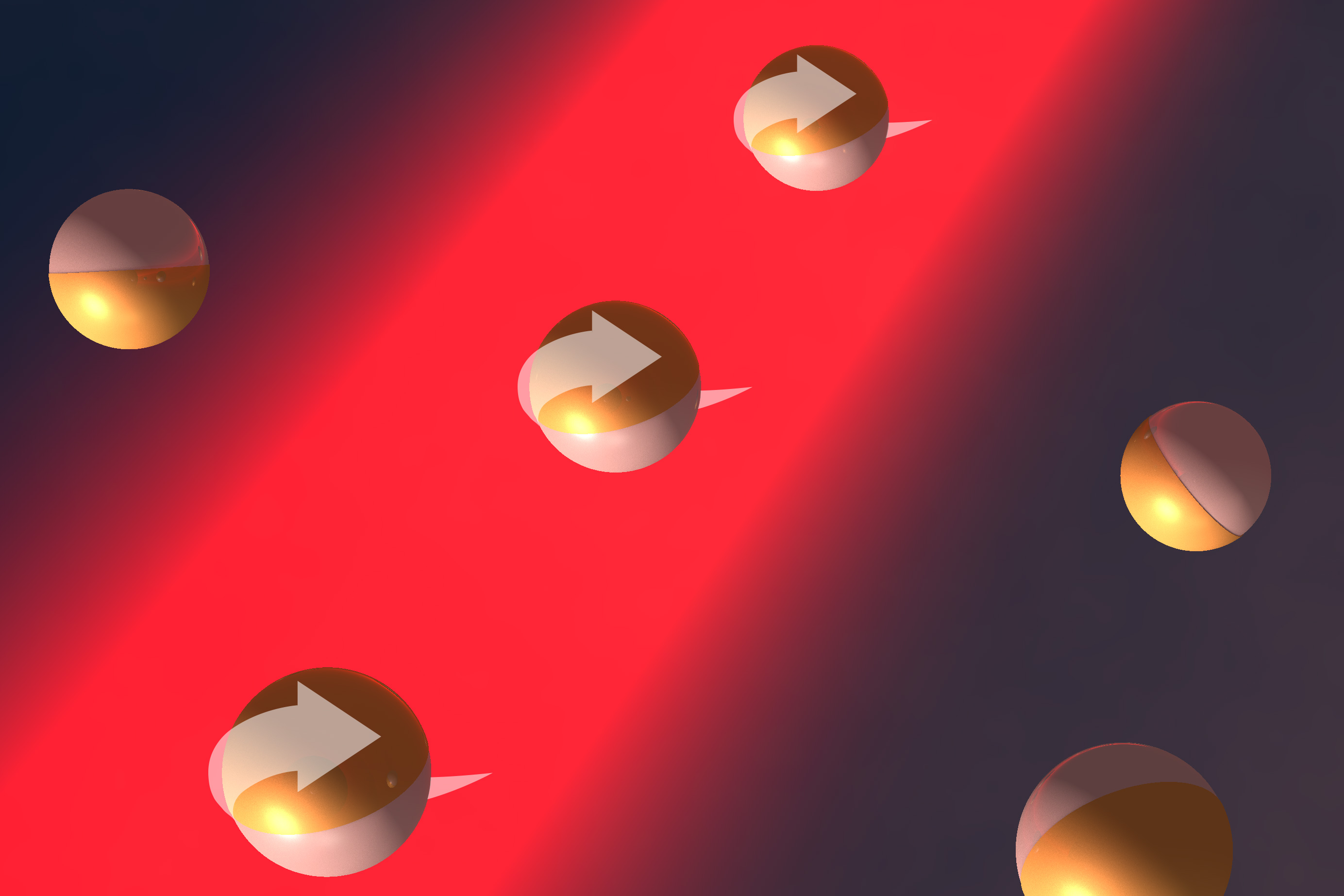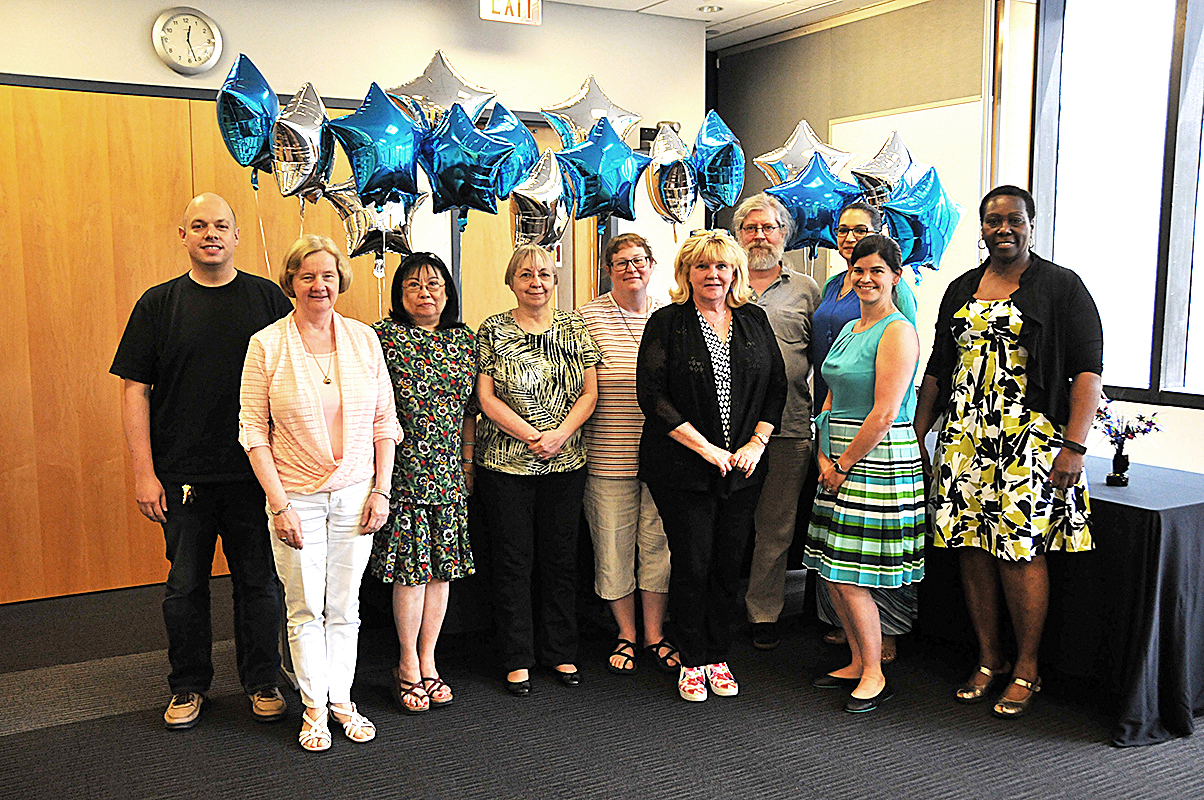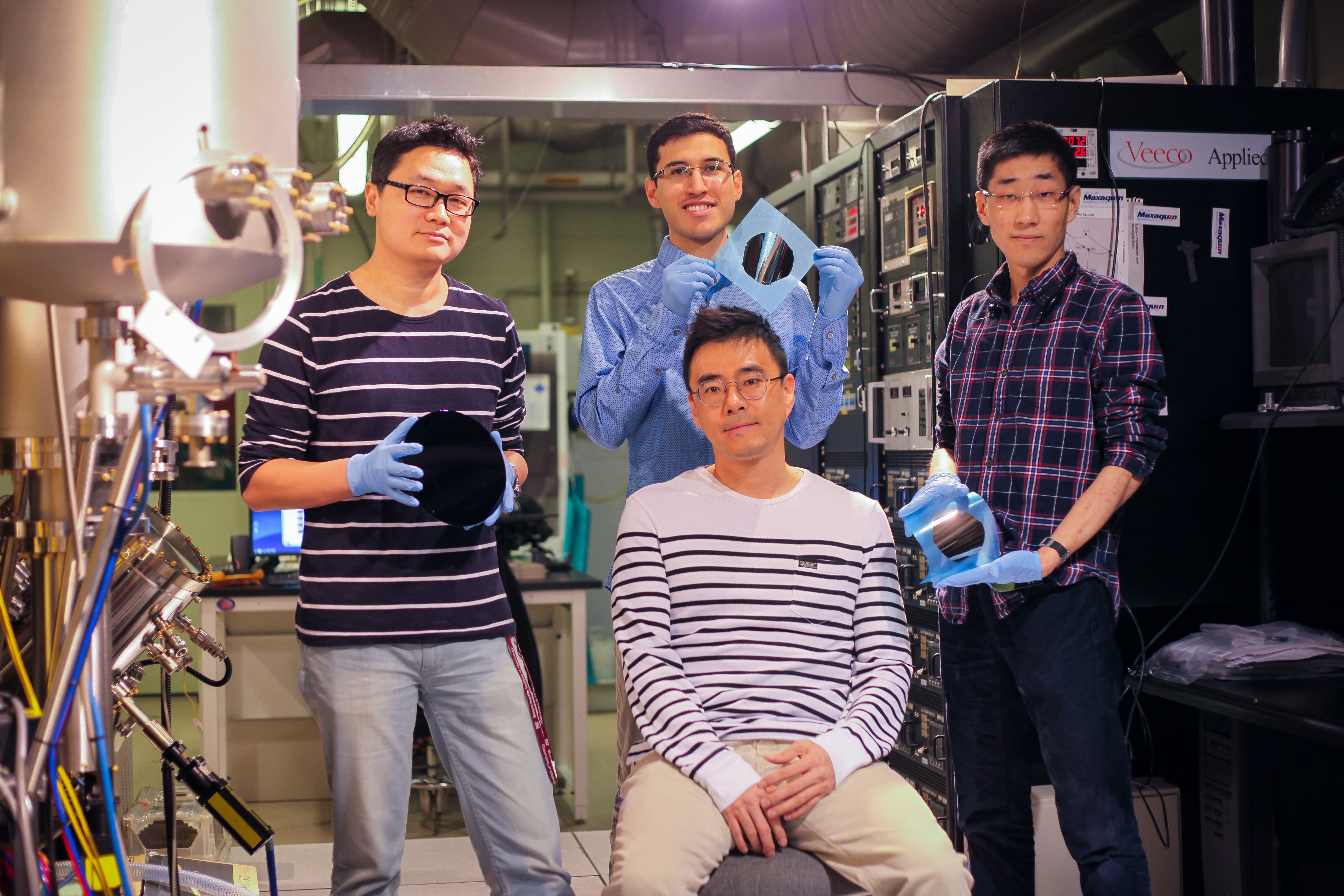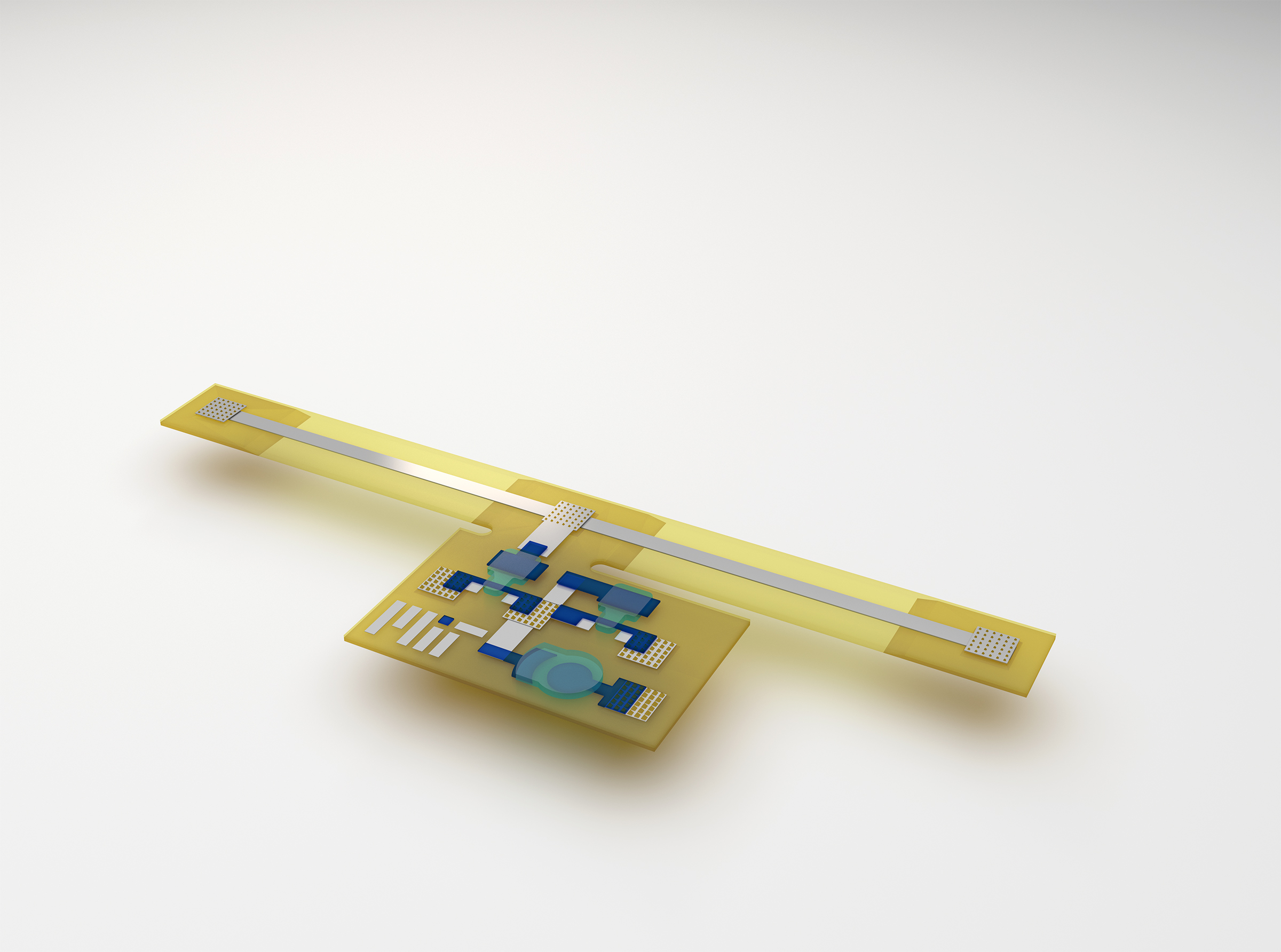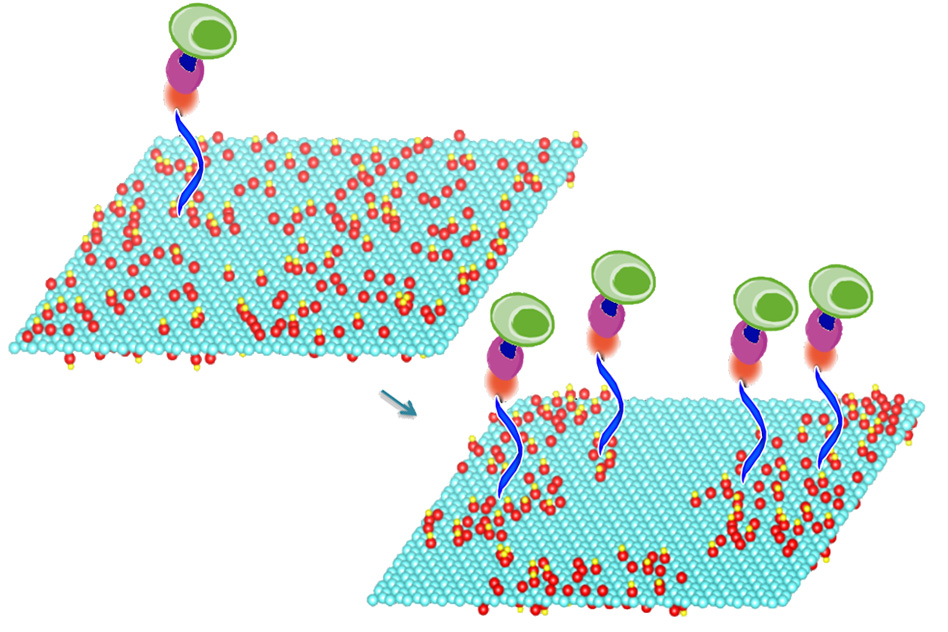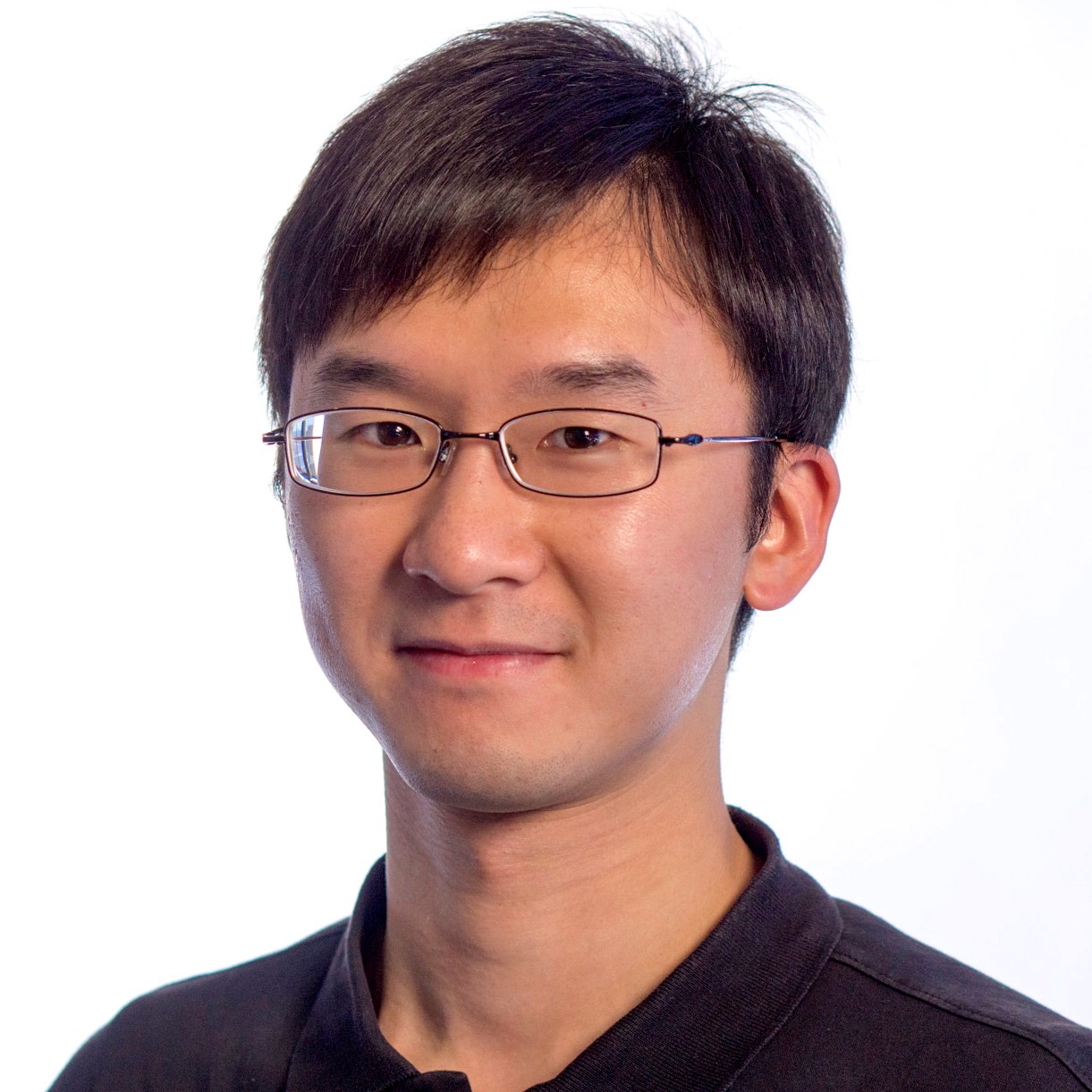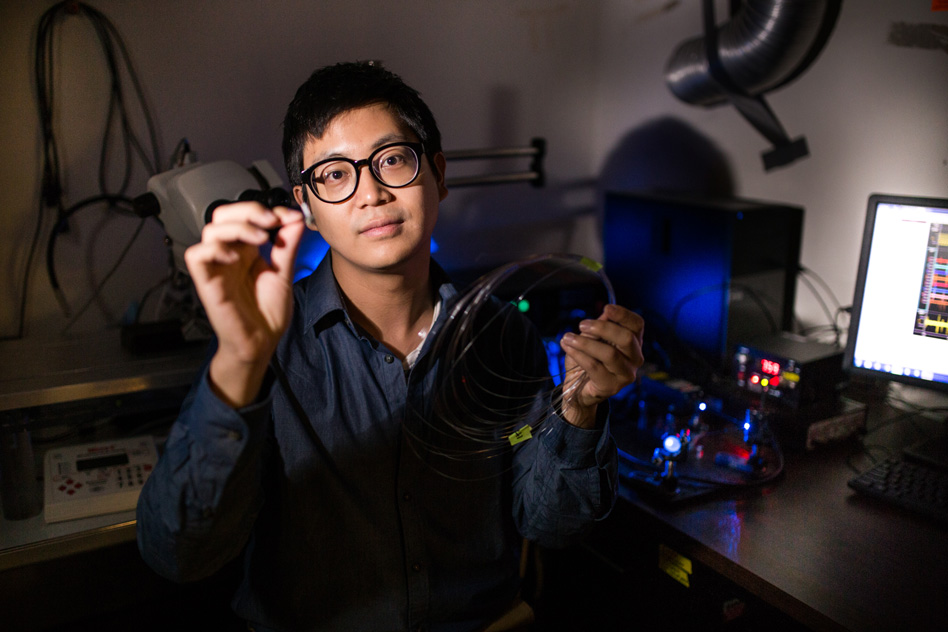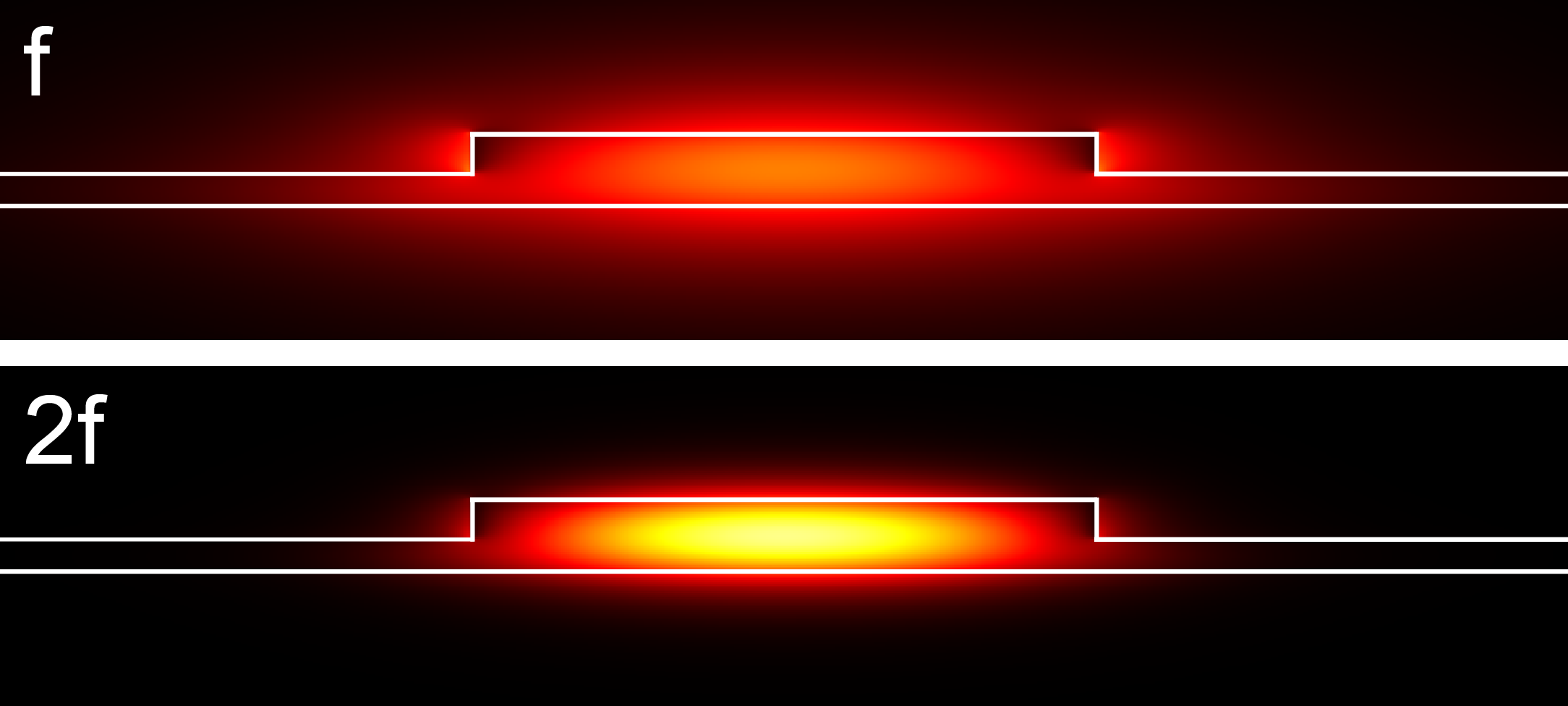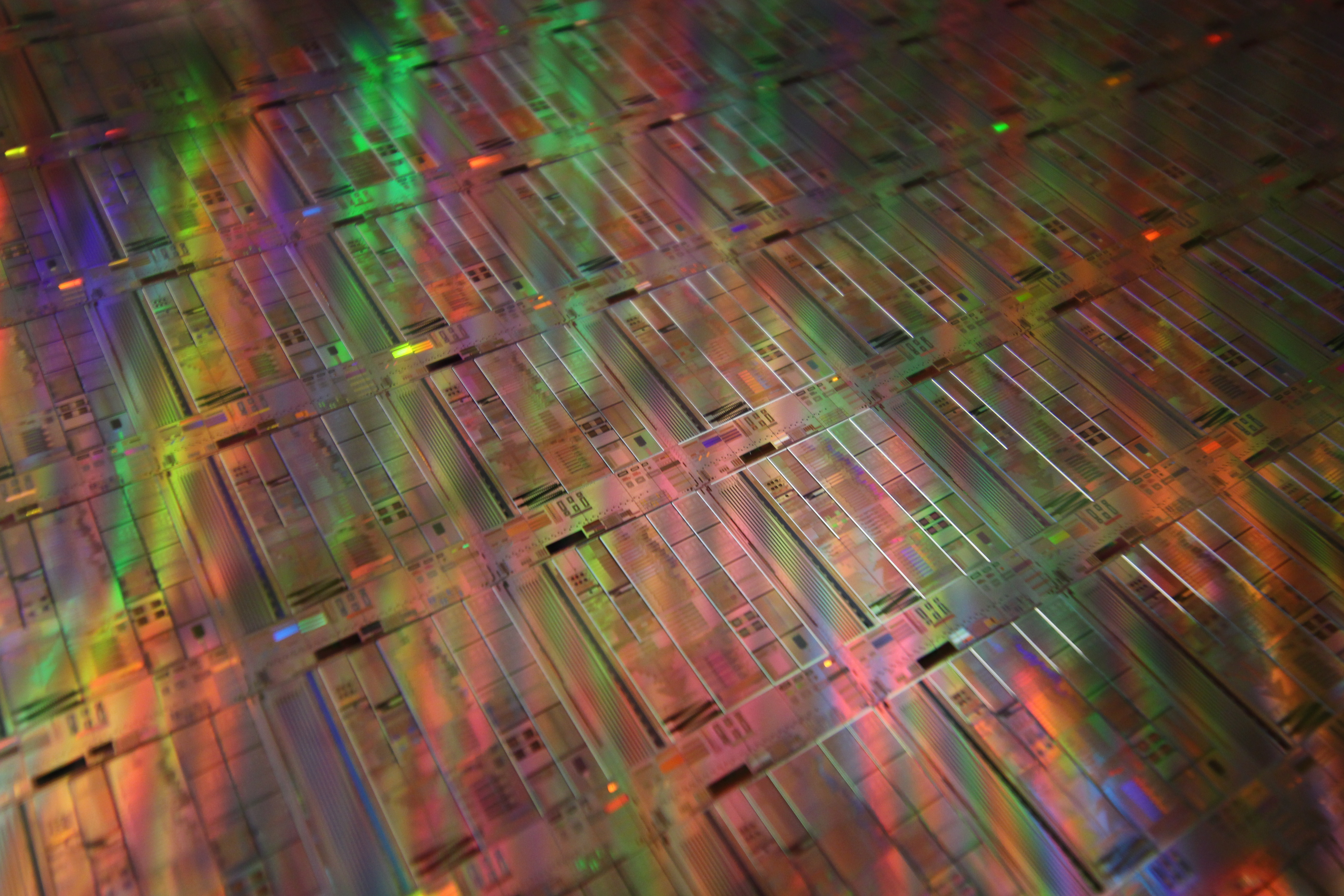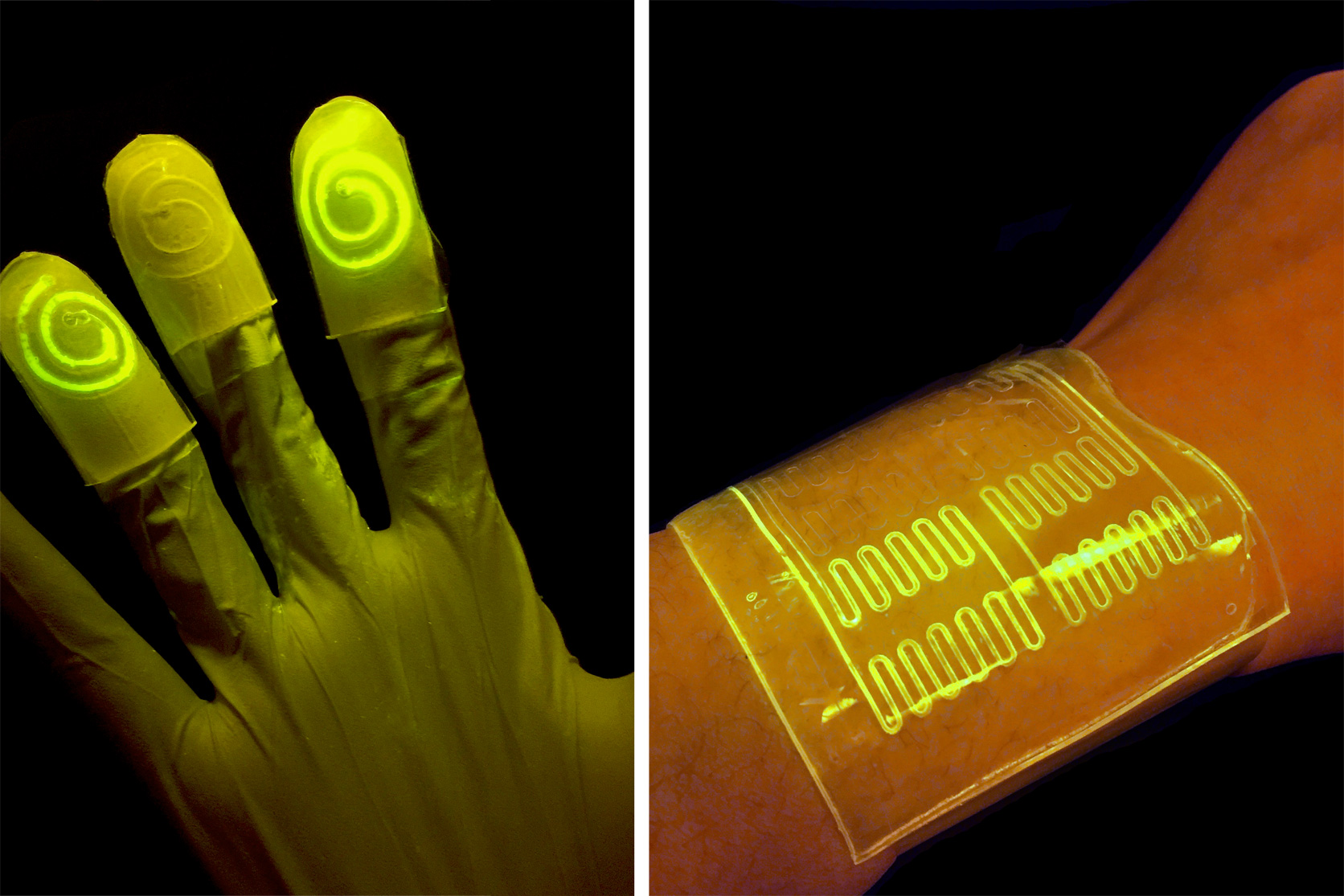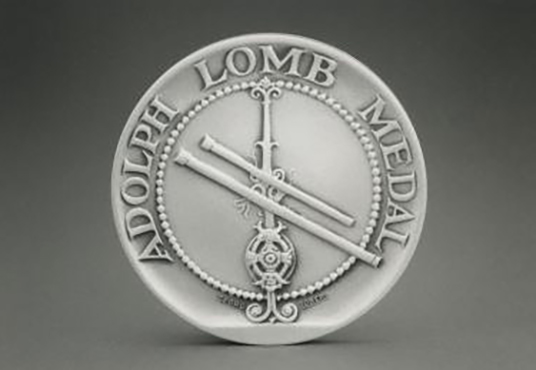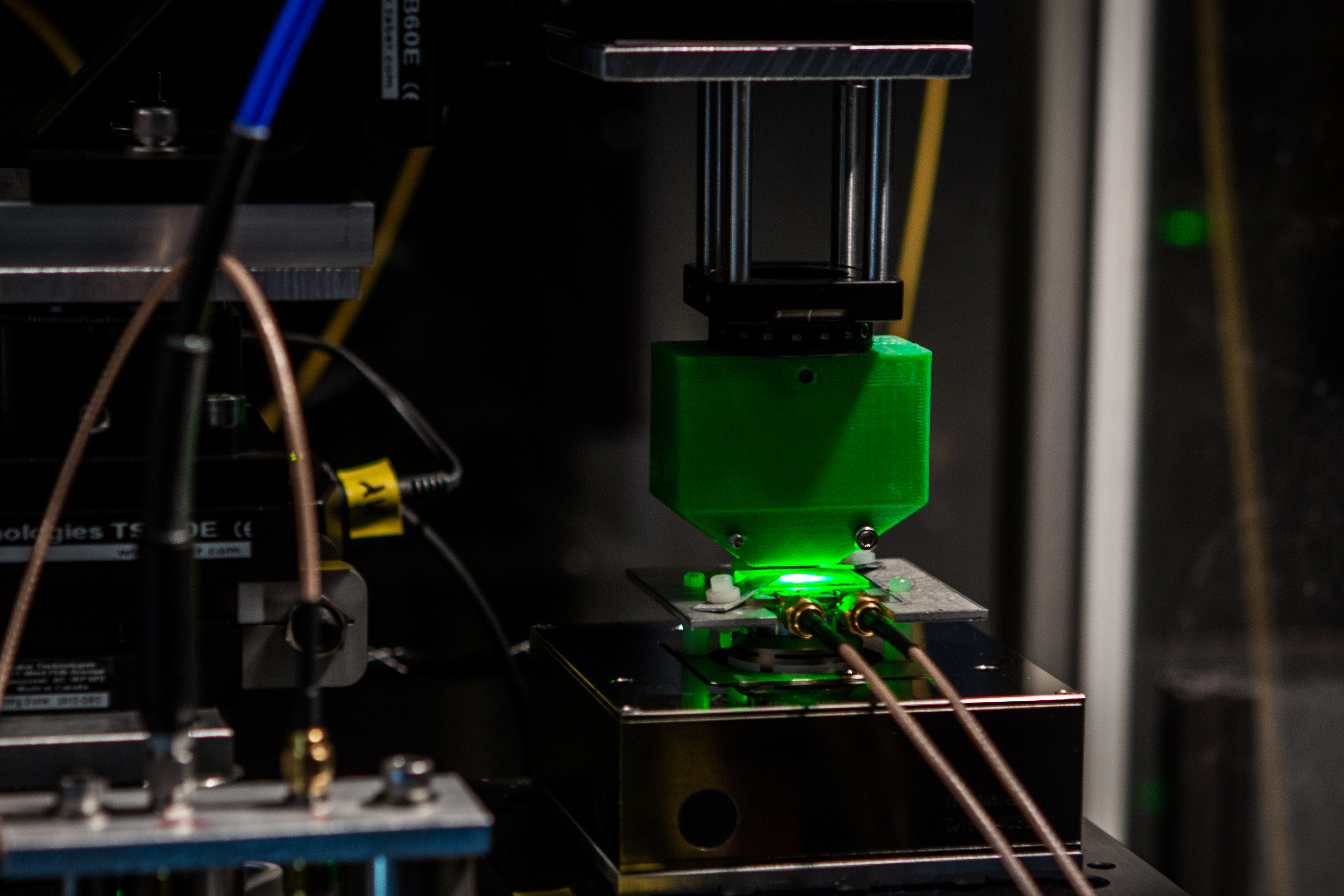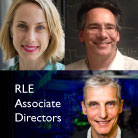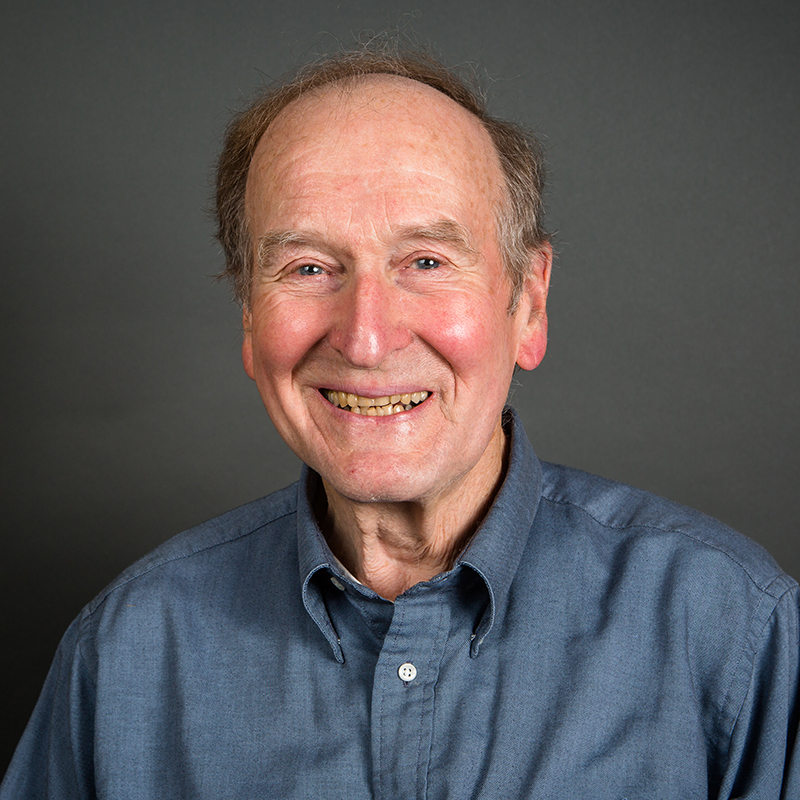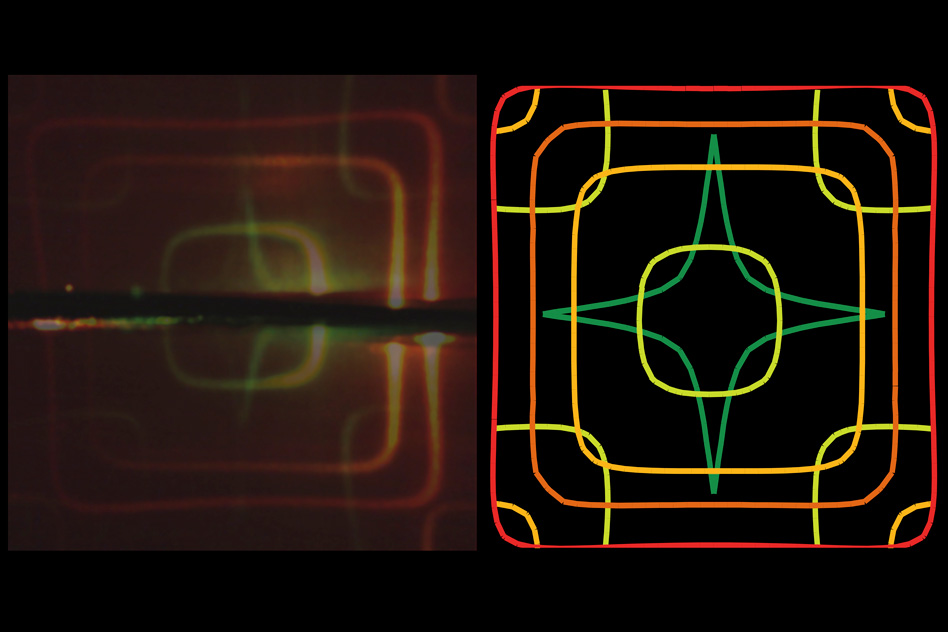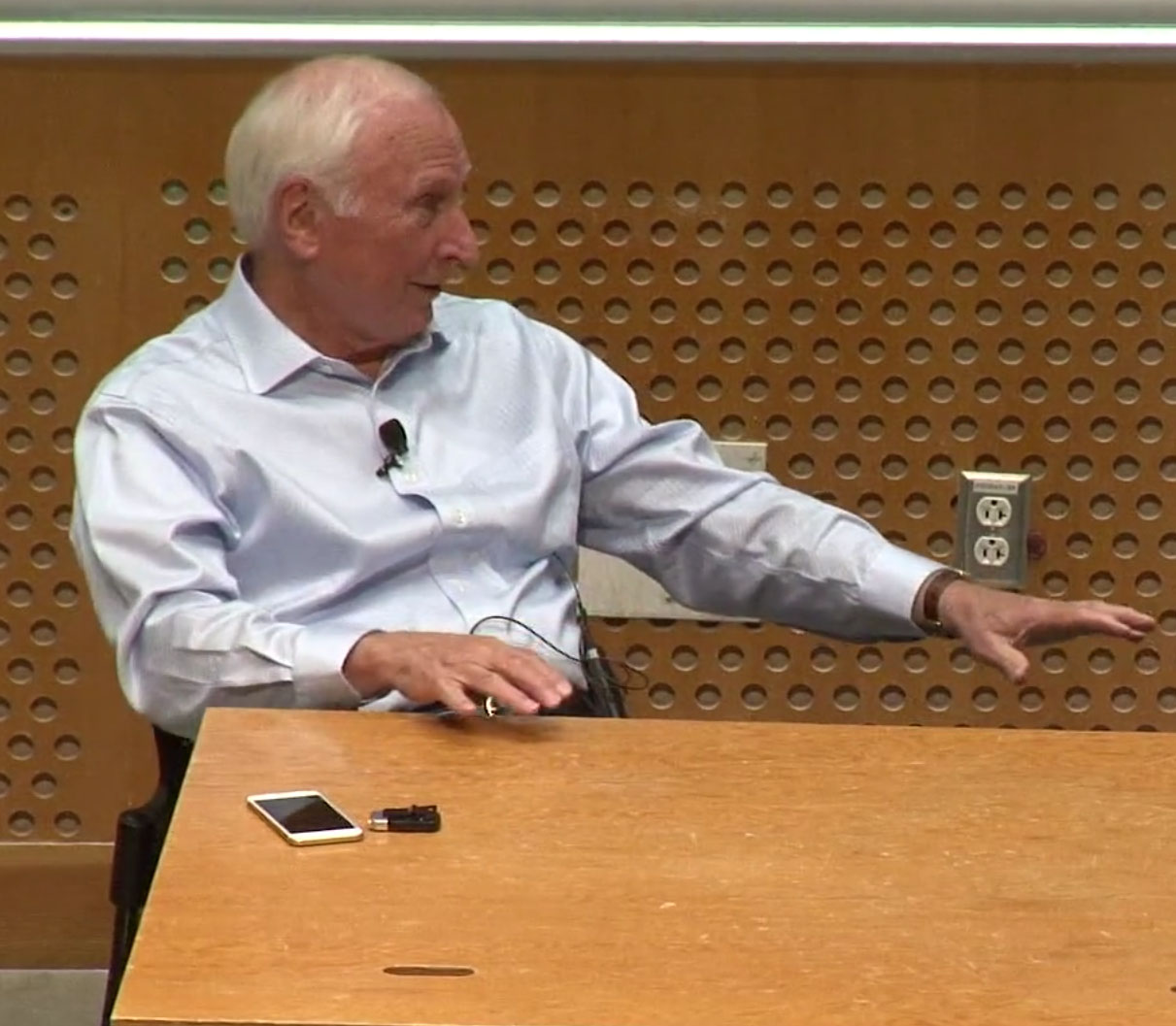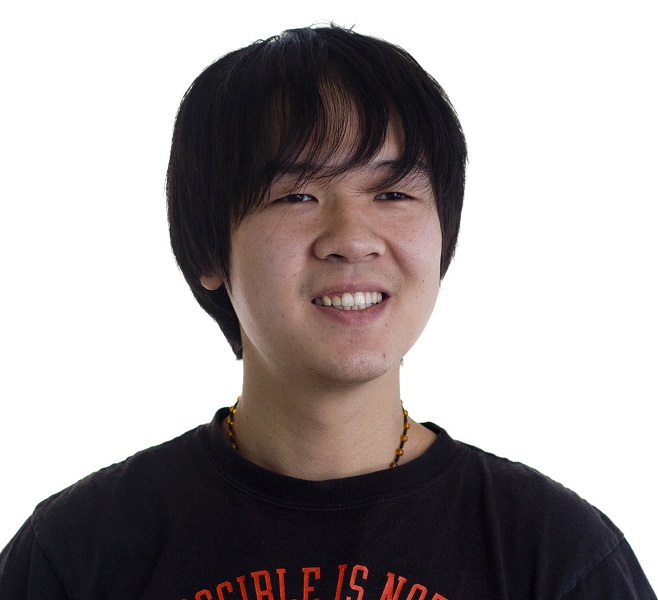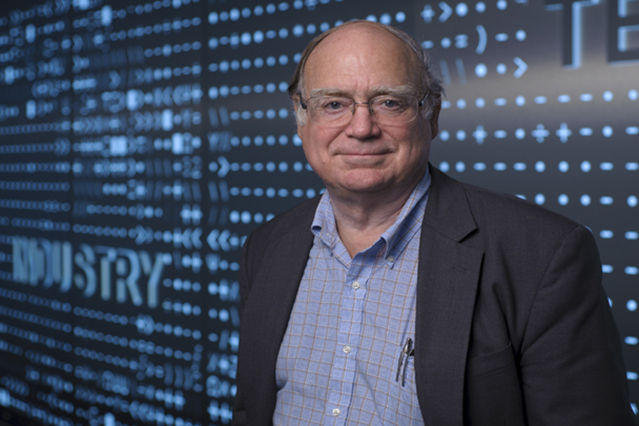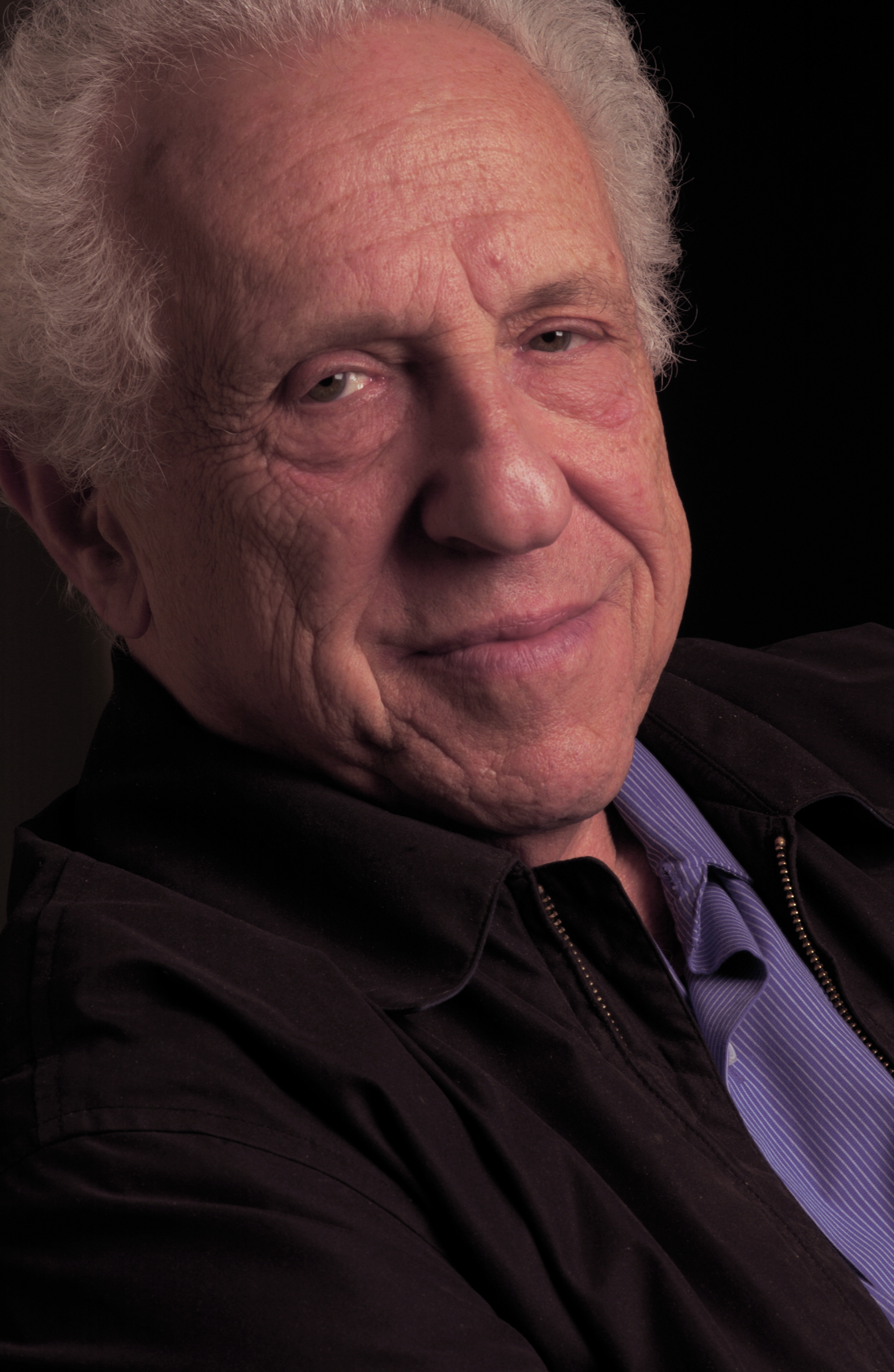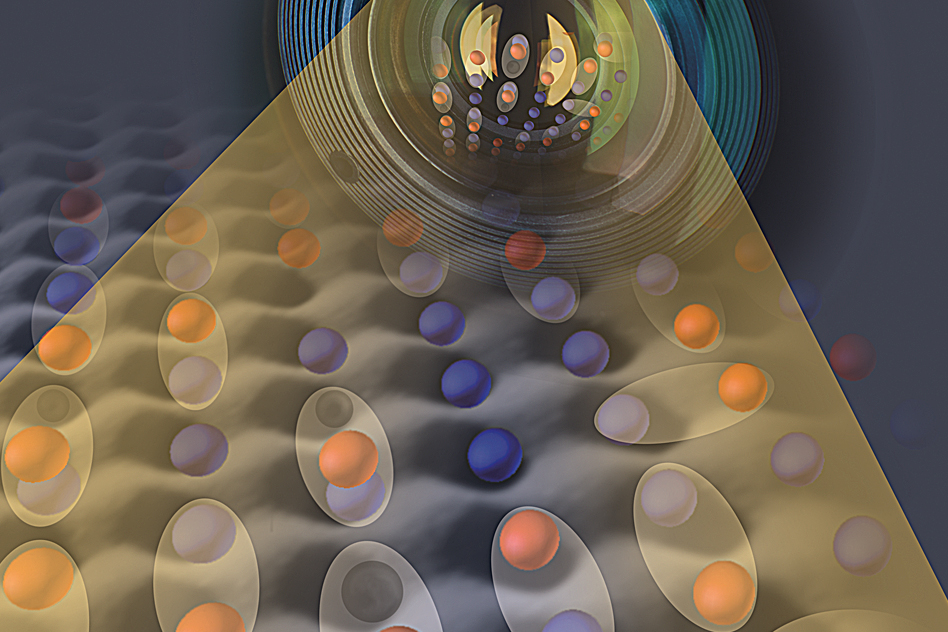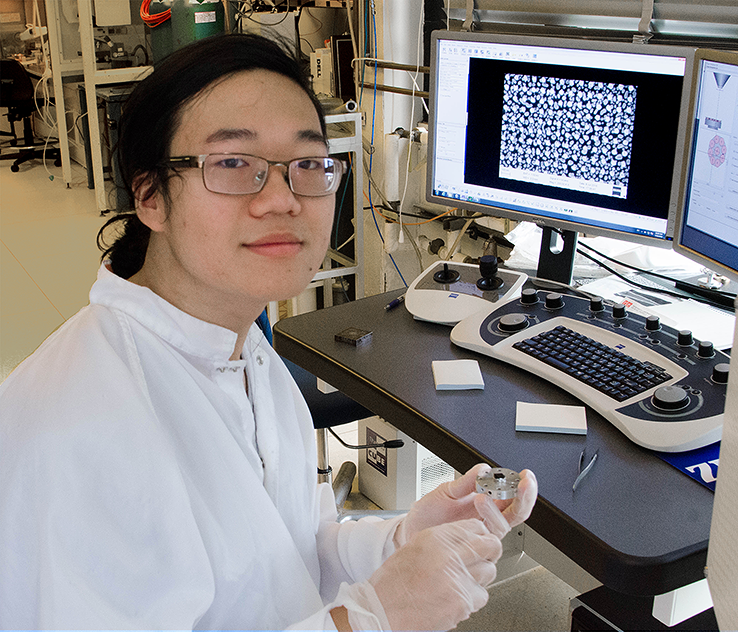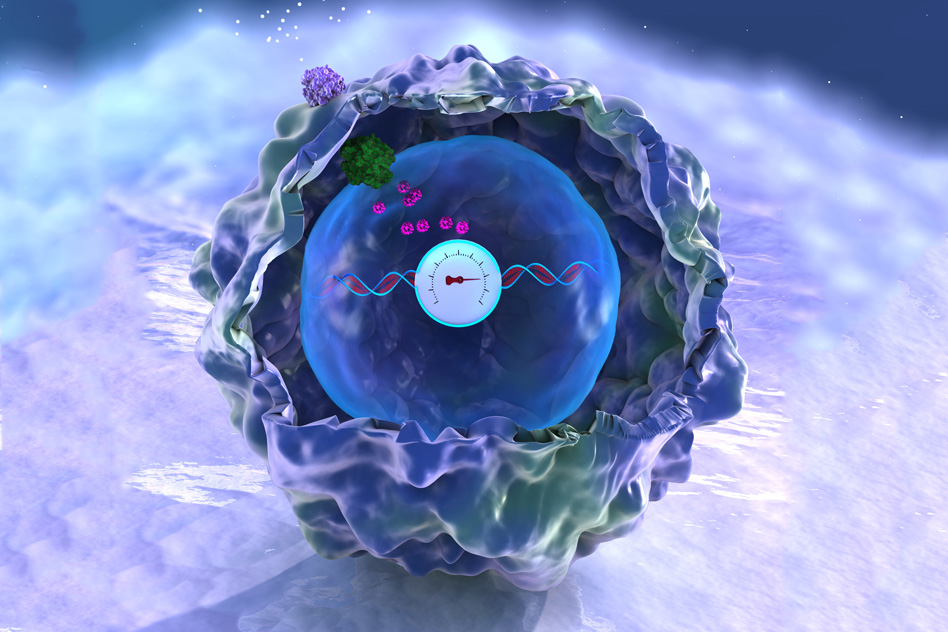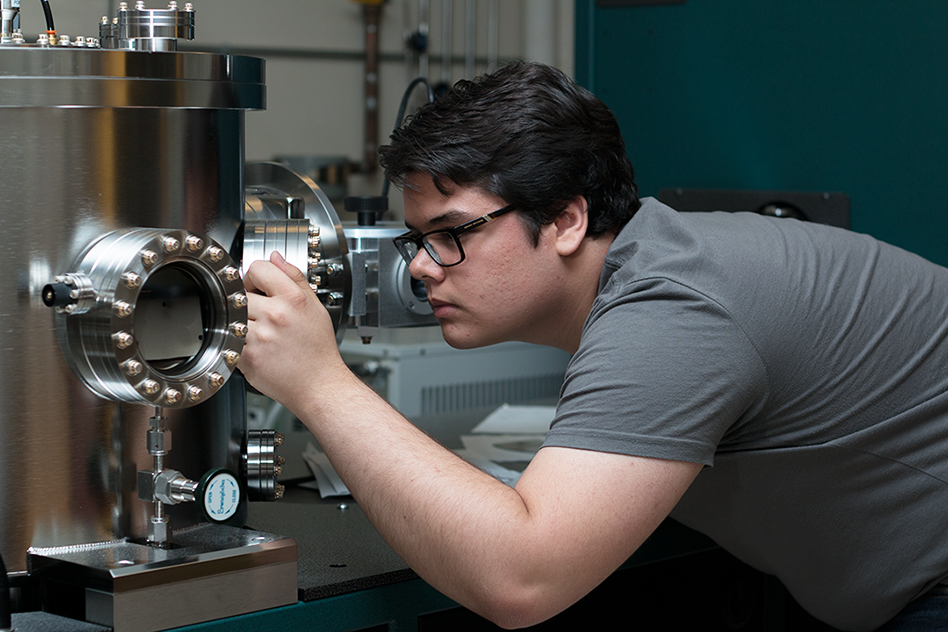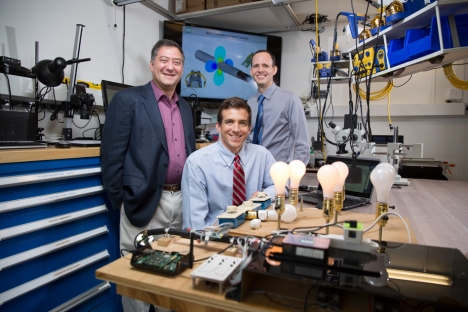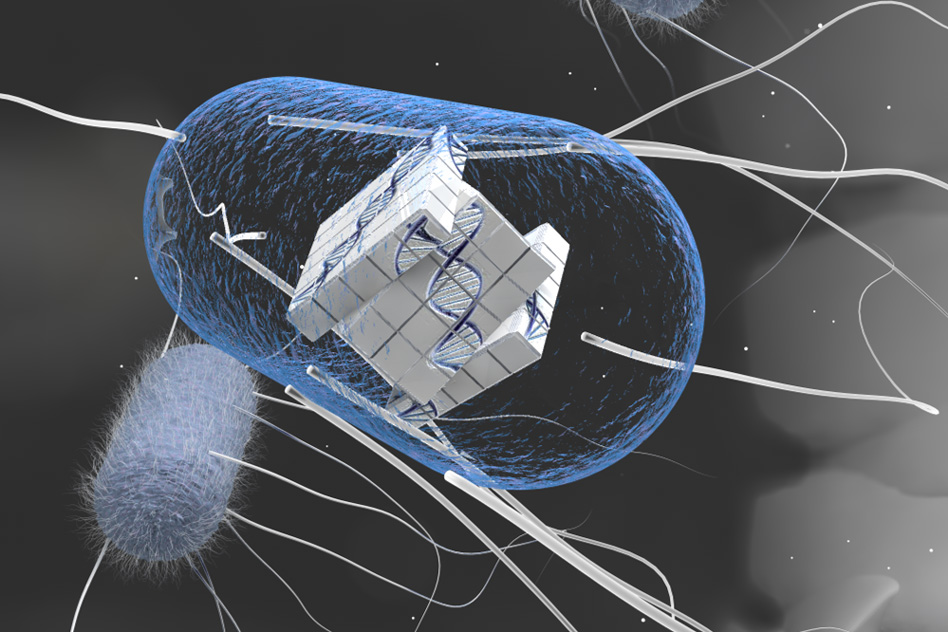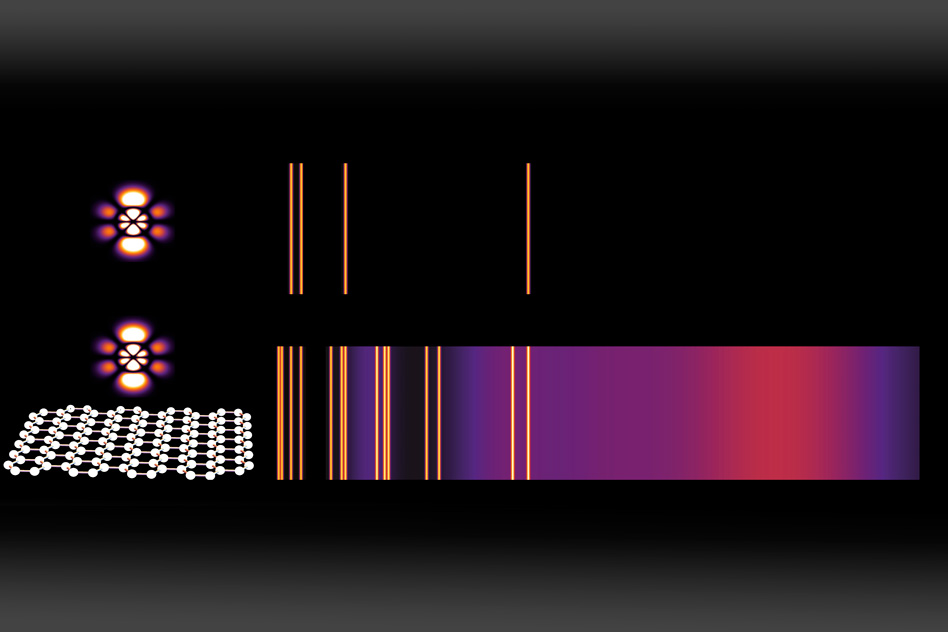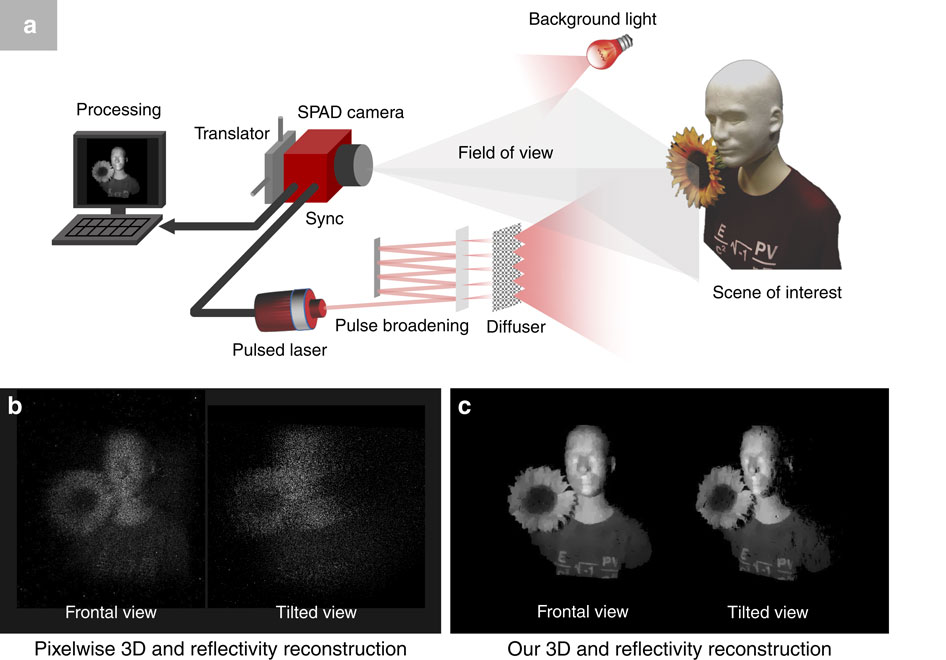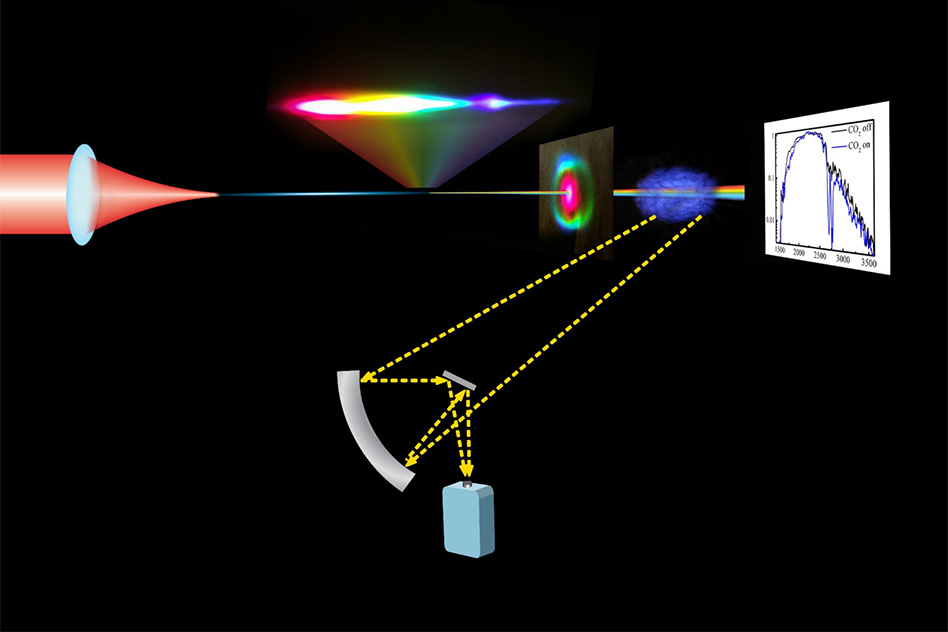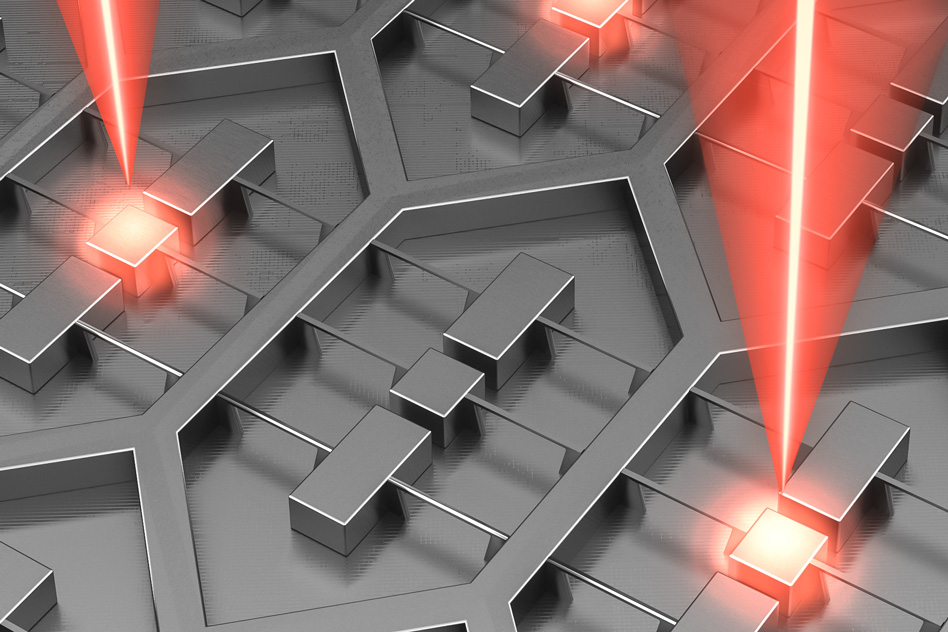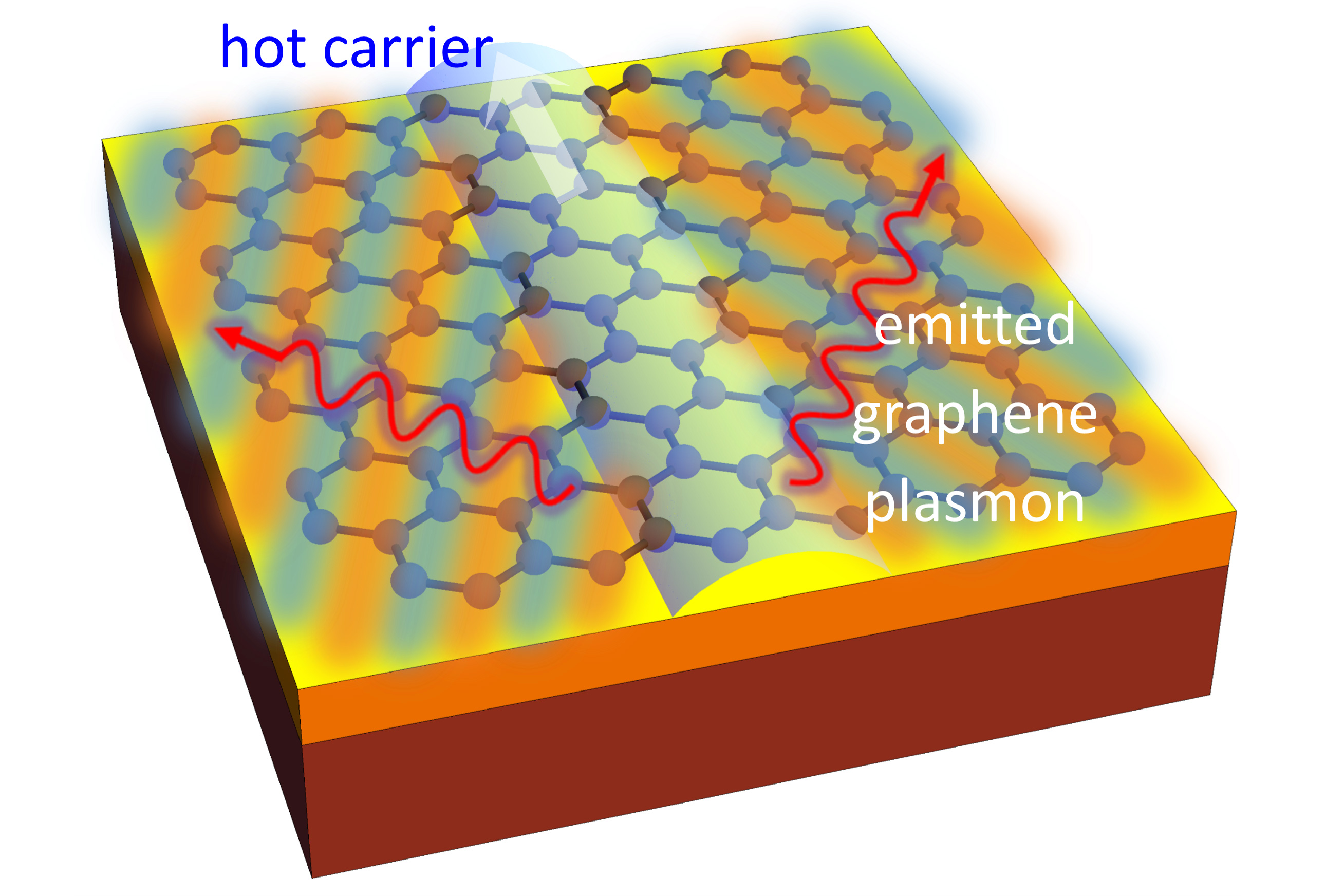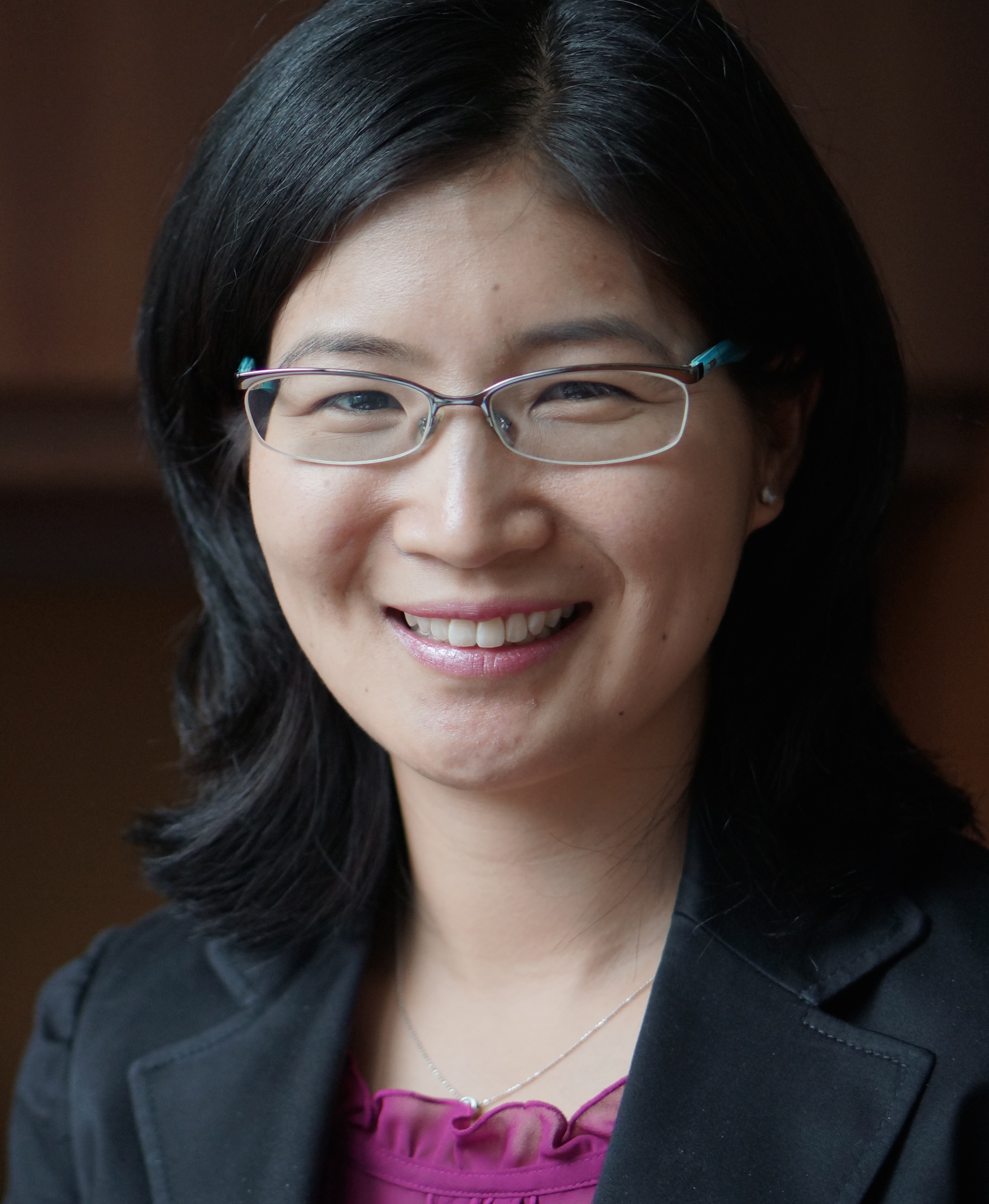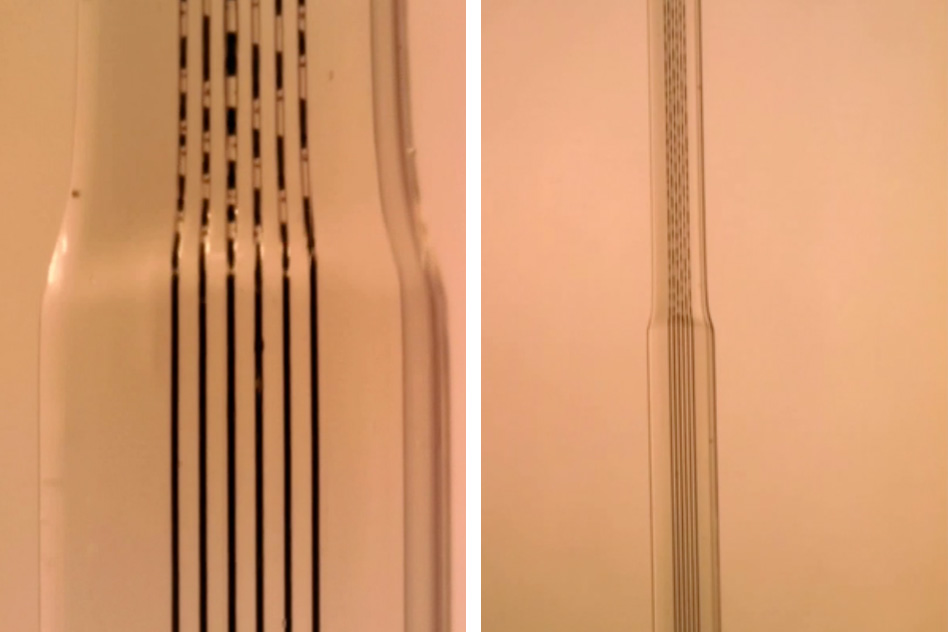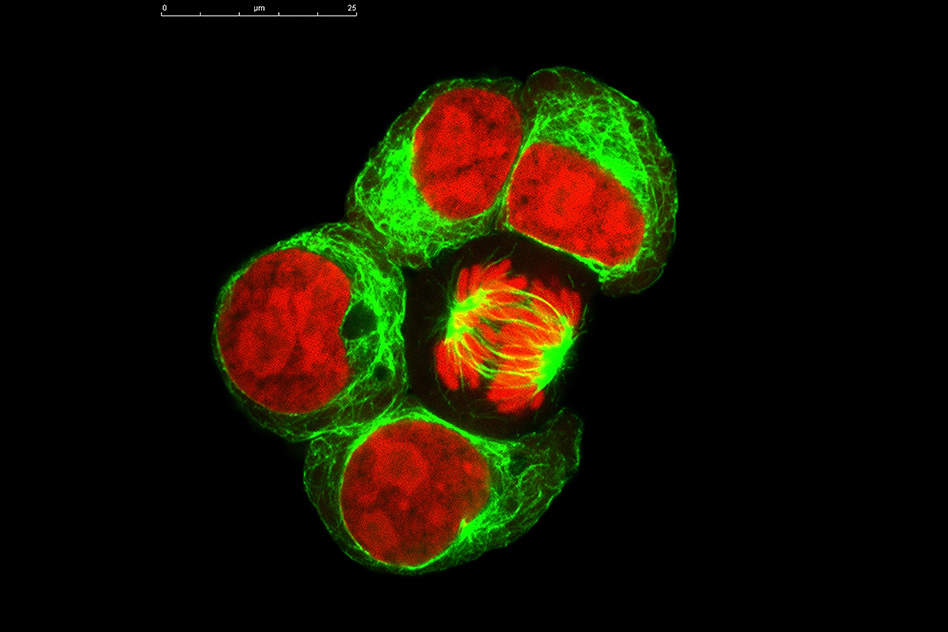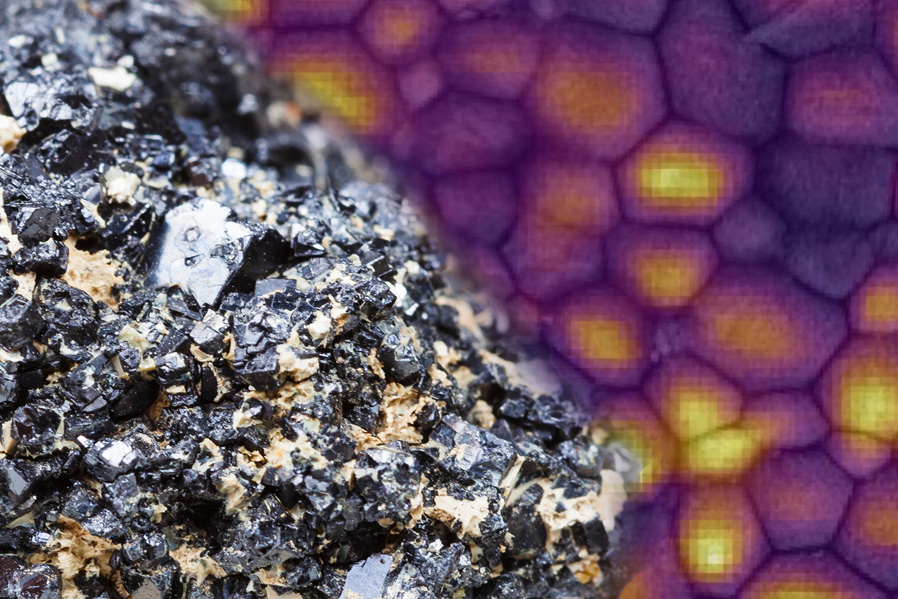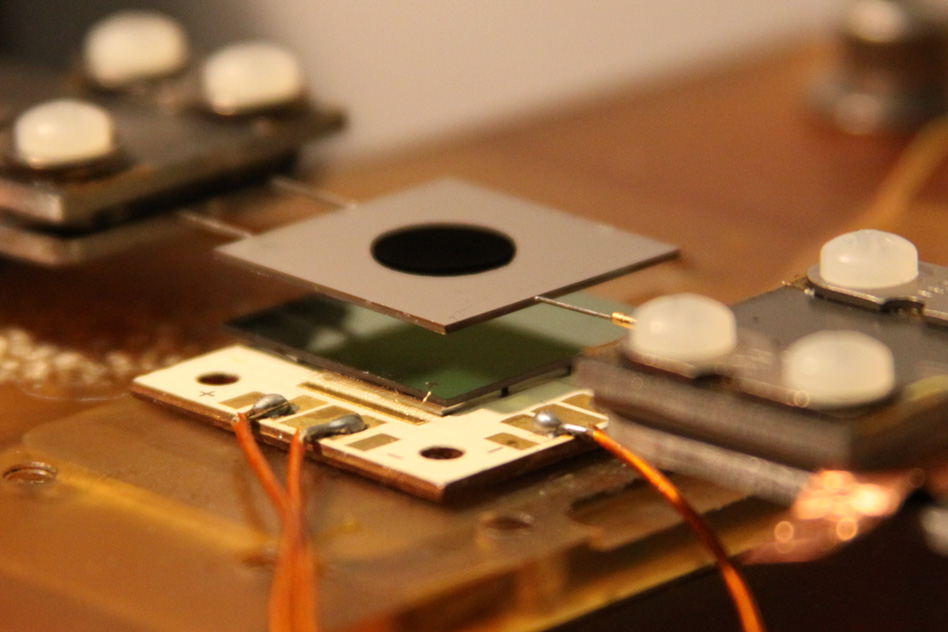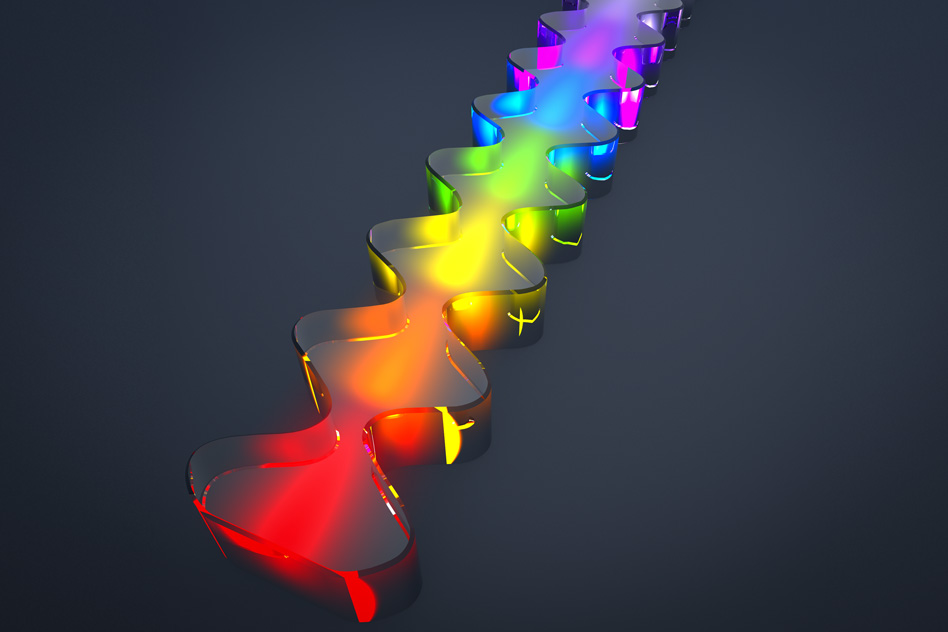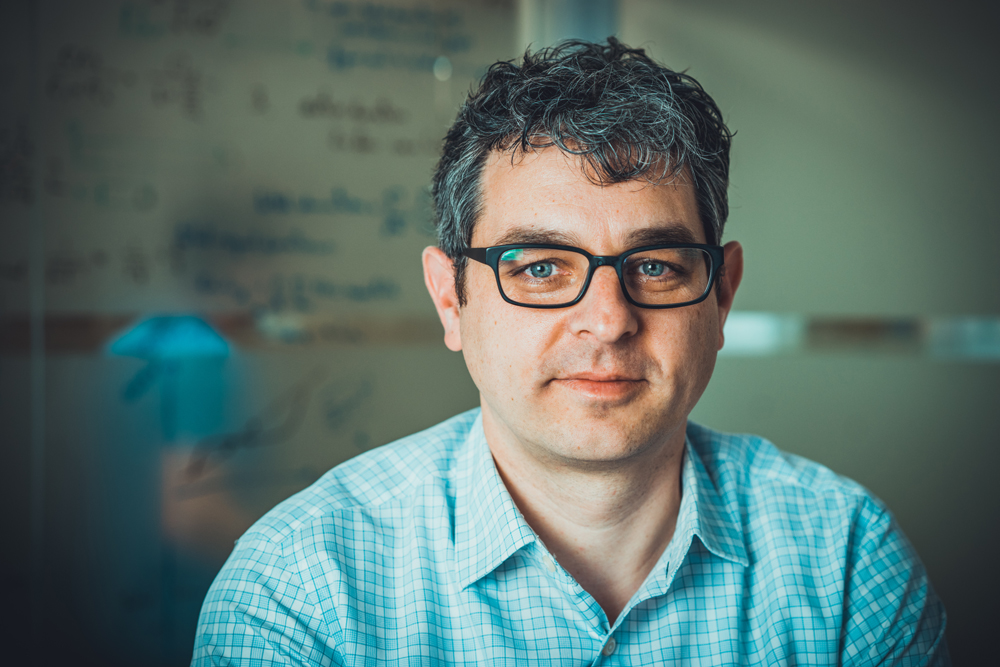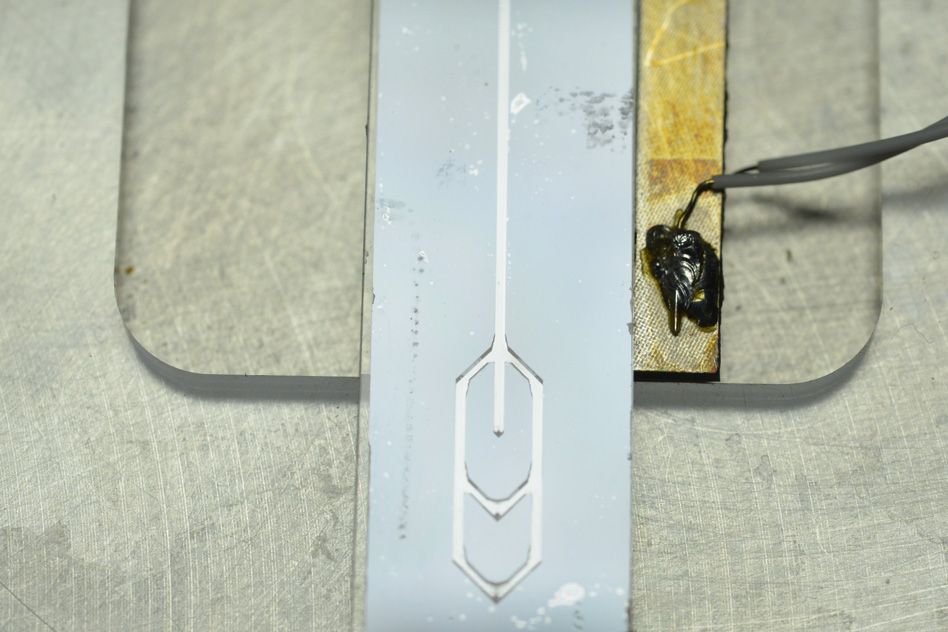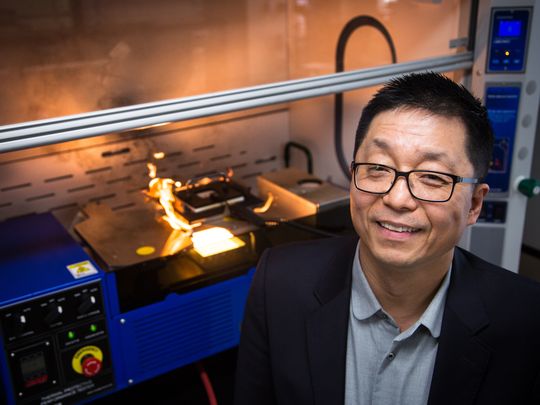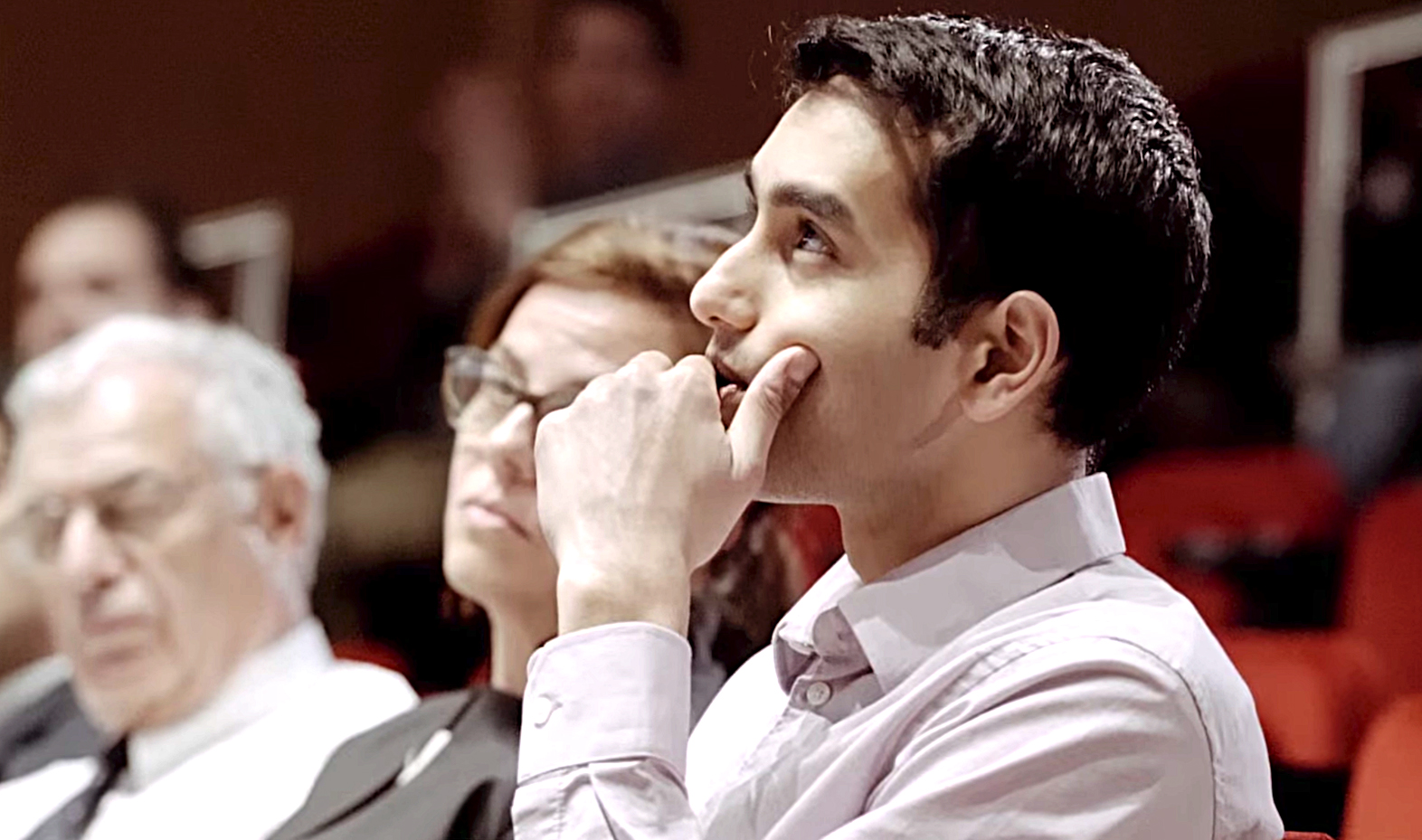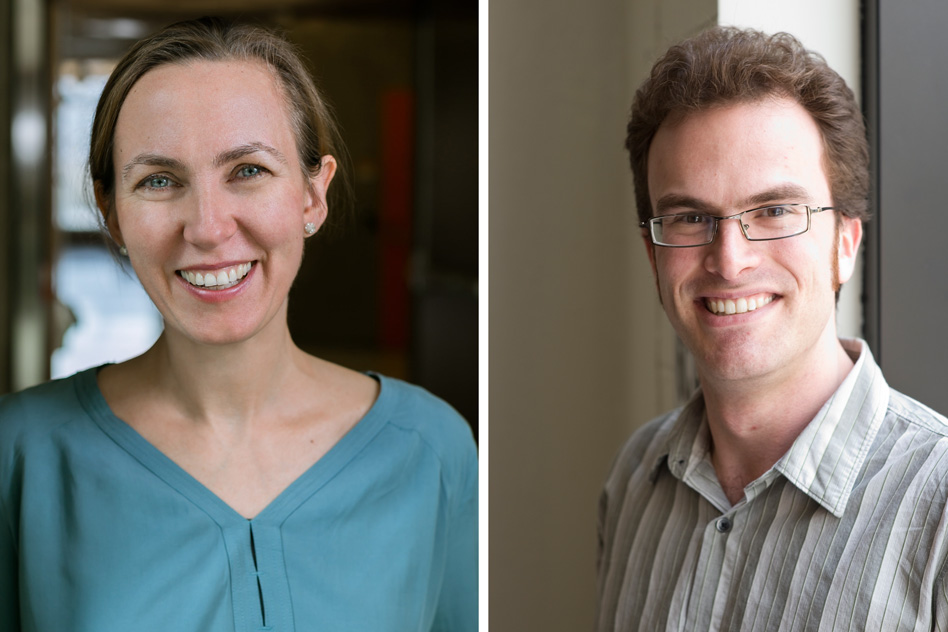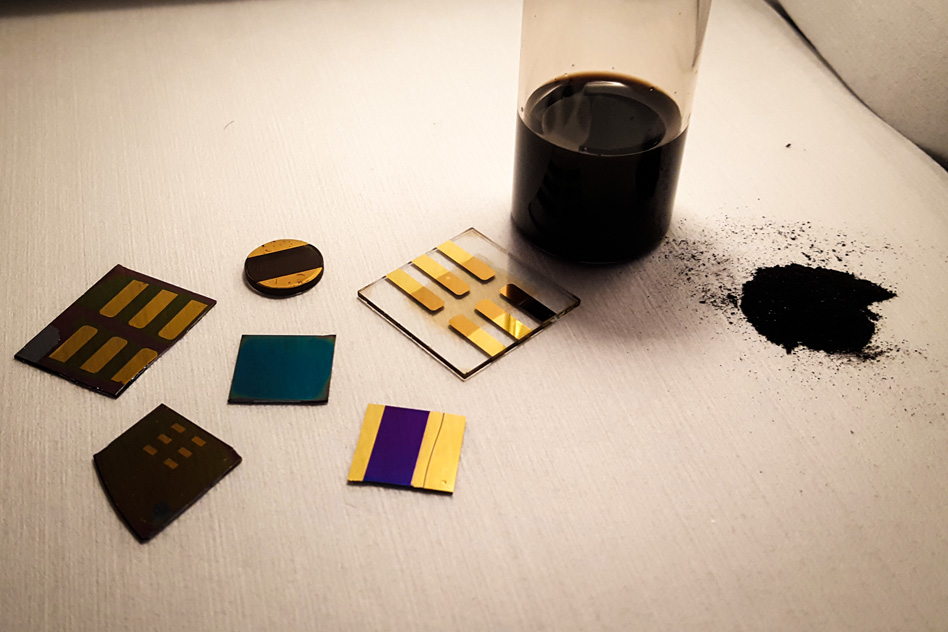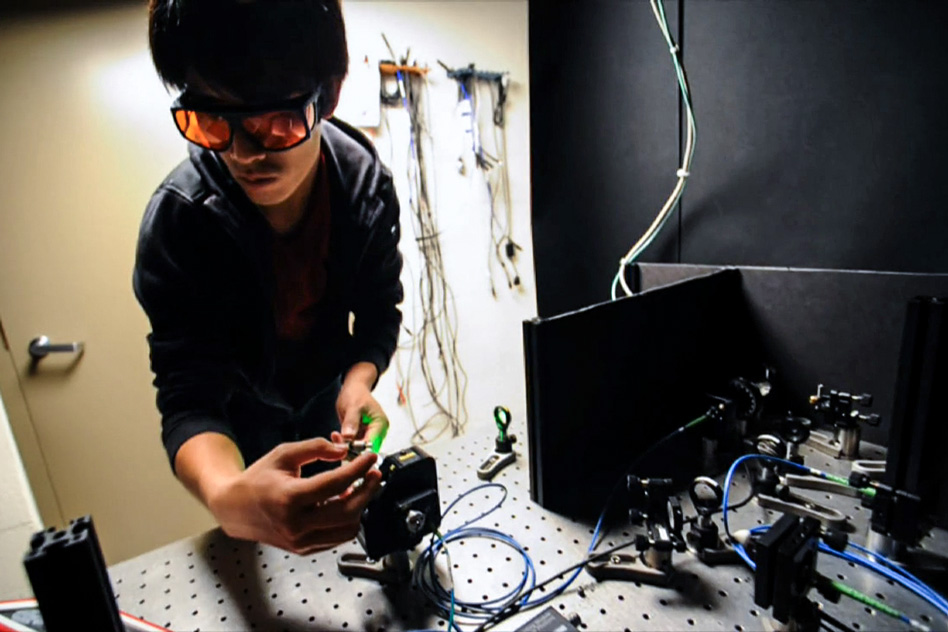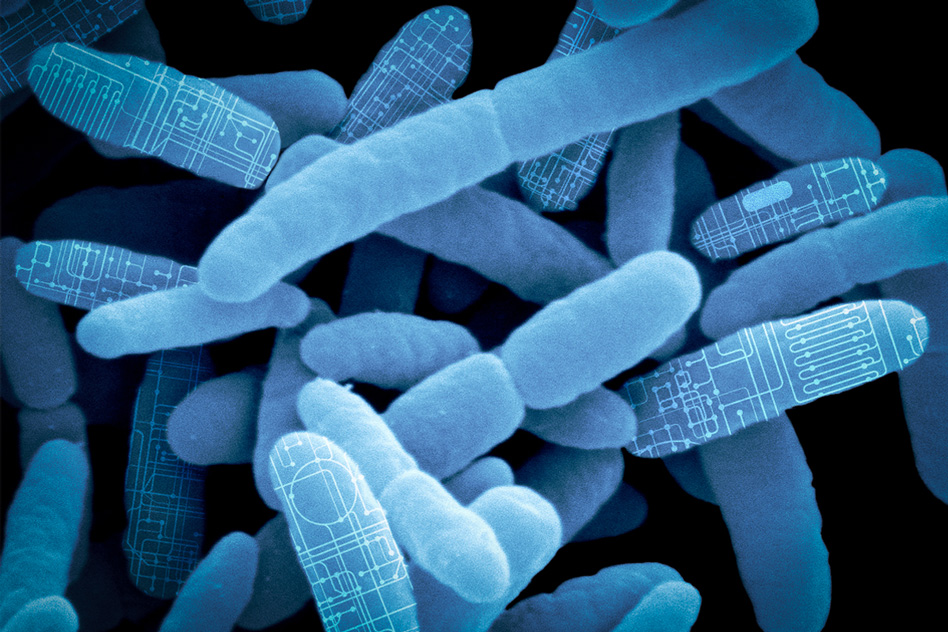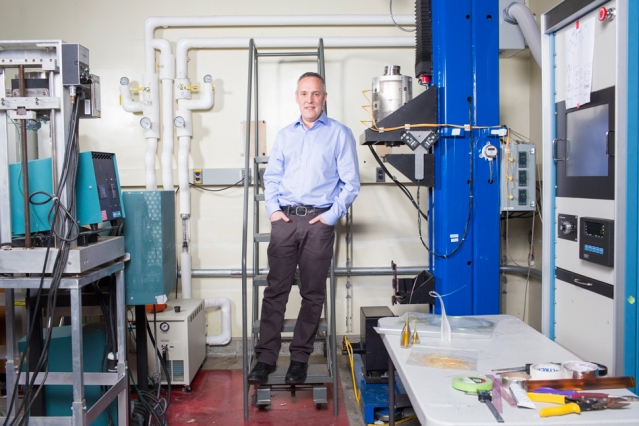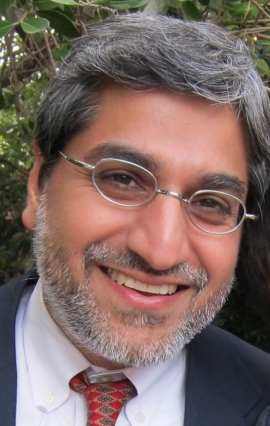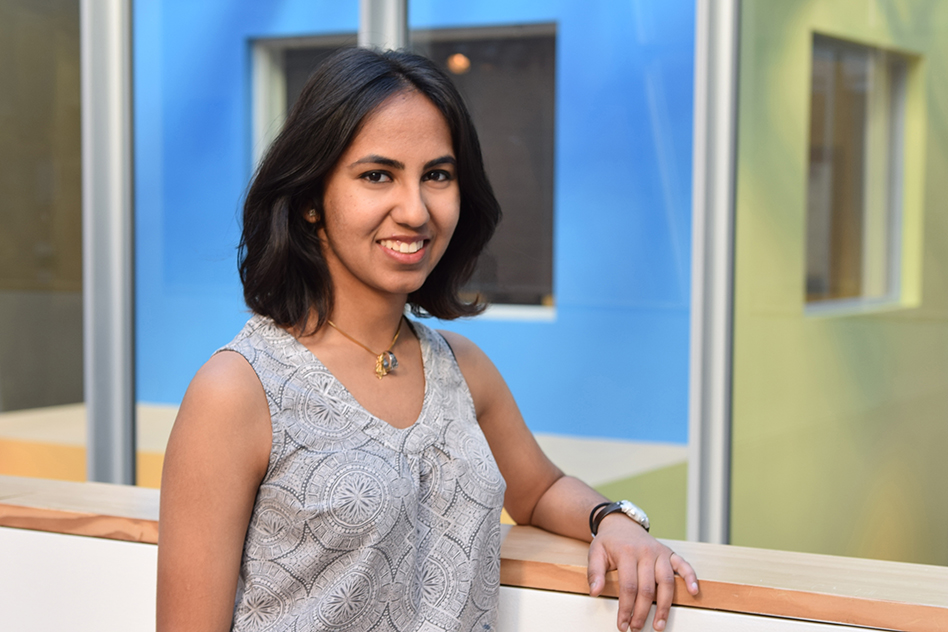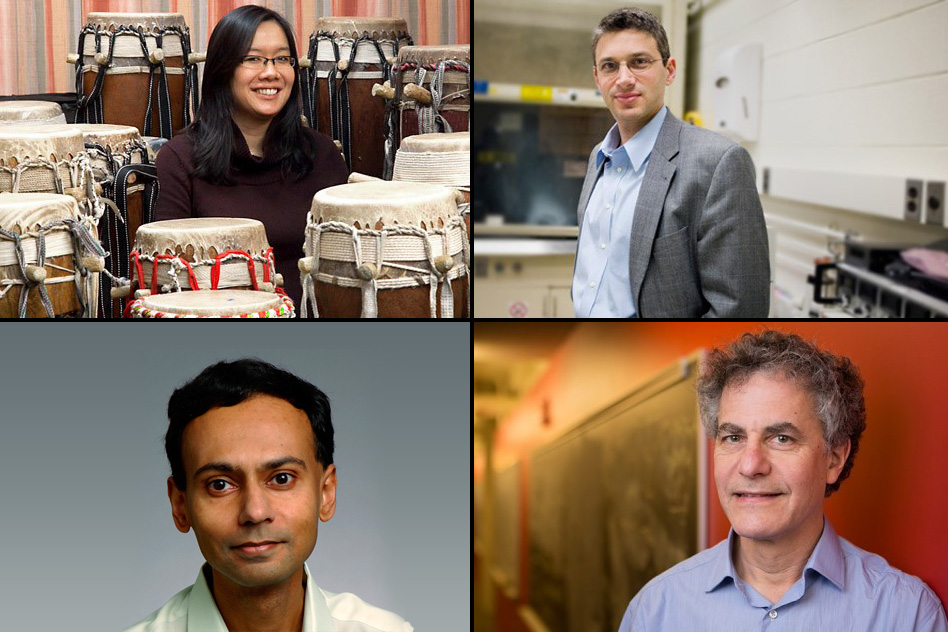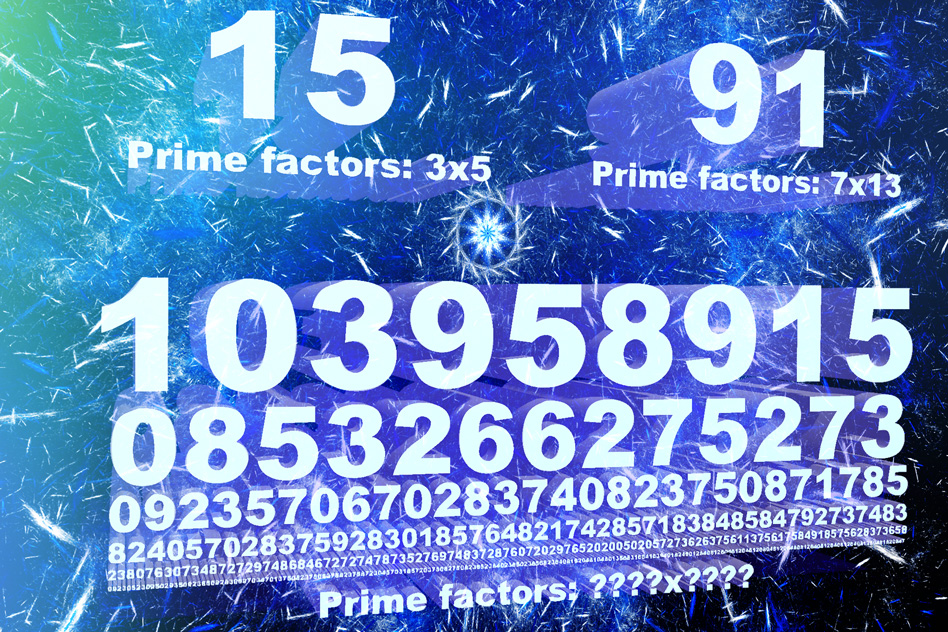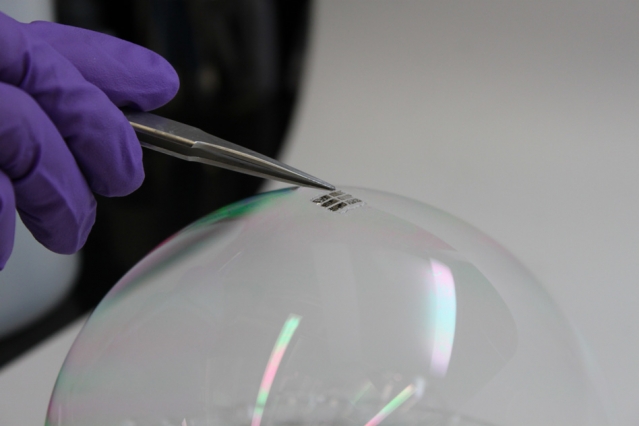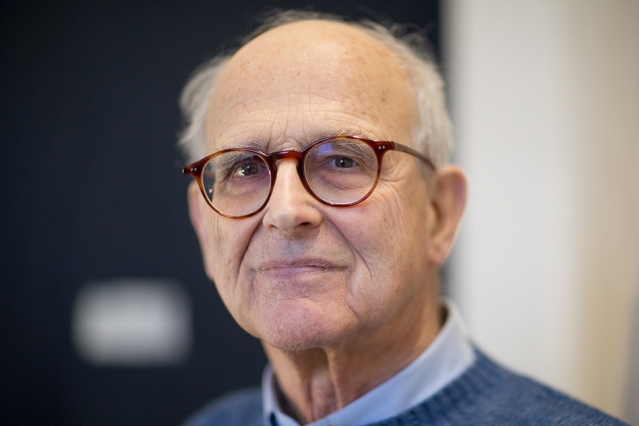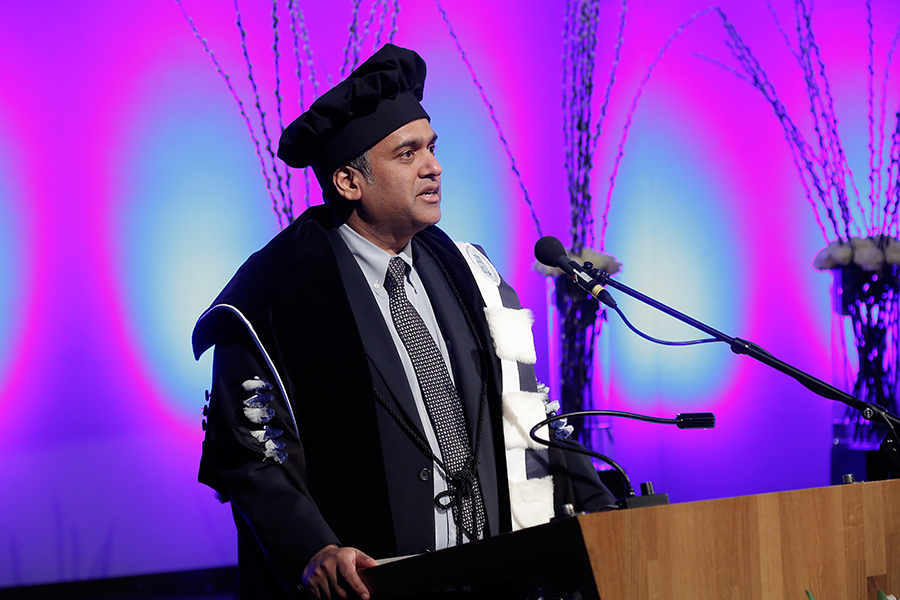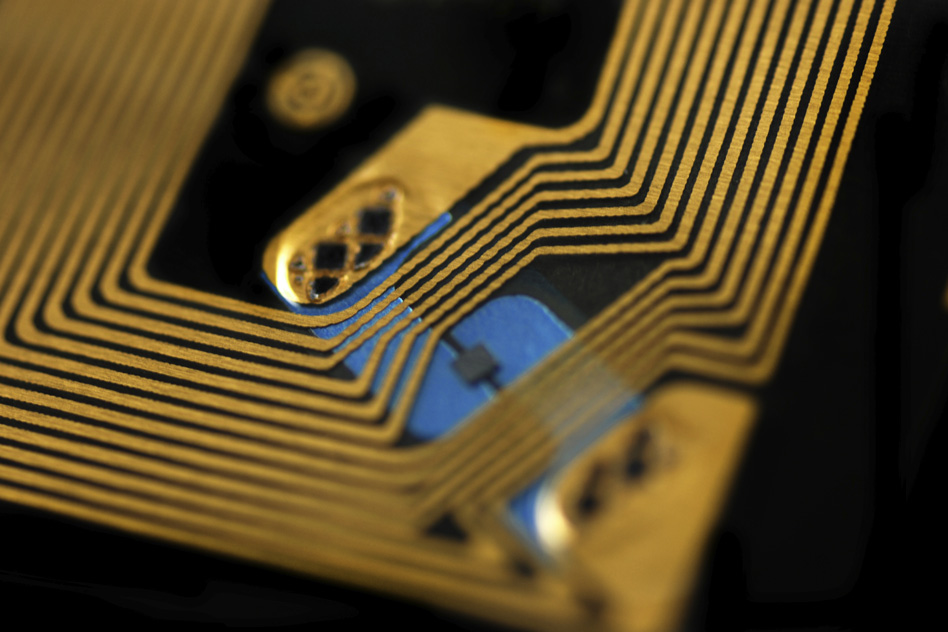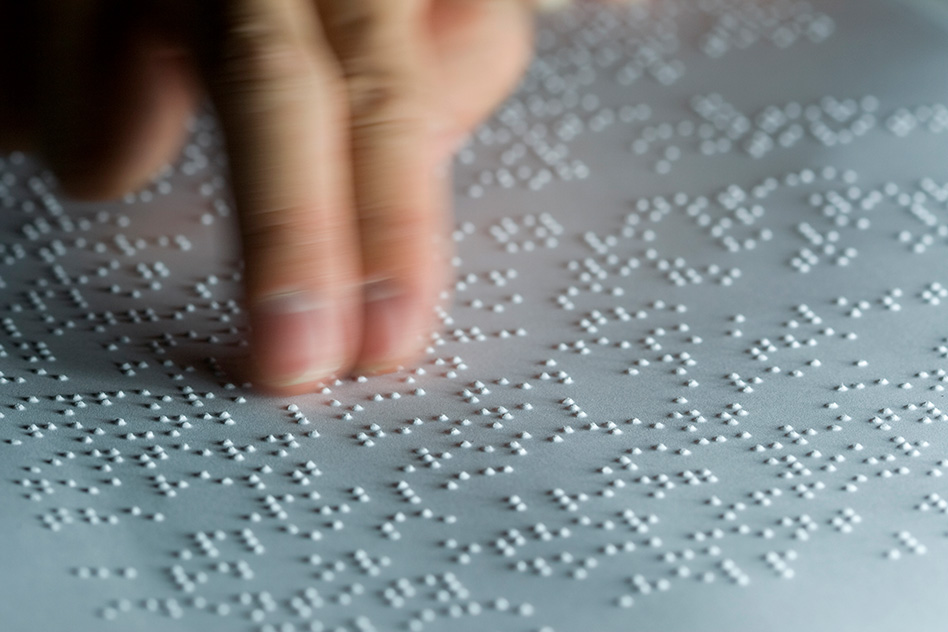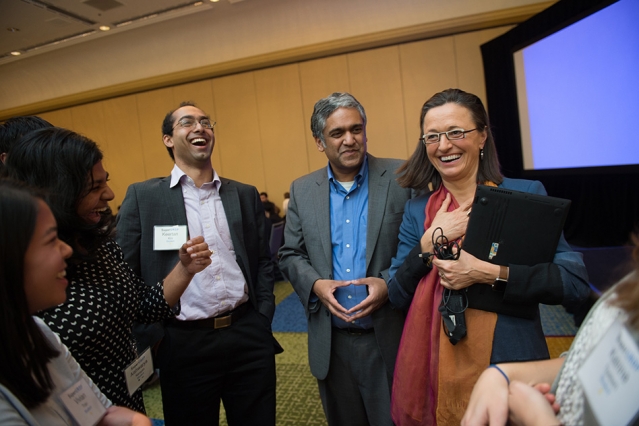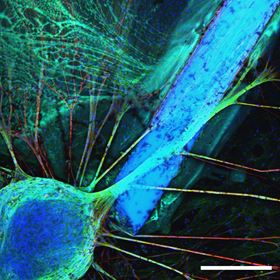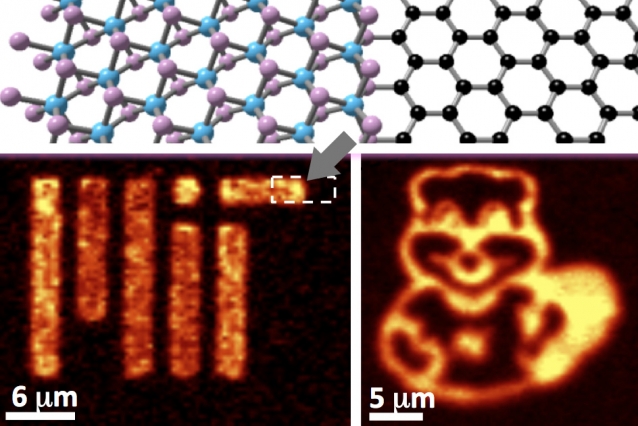RLE News
Neural networks everywhere
New chip reduces neural networks’ power consumption by up to 95 percent, making them practical for battery-powered devices. «more» Related Links: Neural networks everywhere (MIT News) Professor Anantha Chandrakasan Digital Integrated Circuits and Systems…
Energy-efficient encryption for the internet of things
Special-purpose chip reduces power consumption of public-key encryption by 99.75 percent, increases speed 500-fold. «more» Related Links: Energy-efficient encryption for the internet of things (MIT News) Professor Anantha Chandrakasan Digital Integrated…
Former RLE director, Professor Yoel Fink recognized by Science Magazine for creation of Translational Fellows Program
For postdocs looking to break into entrepreneurship, this MIT fellowship is helping light the way «more» Related Links: Professor Yoel Fink AFFOA
Polina Anikeeva awarded 2018 Vilcek Prize recognizing contributions to biomedical research made by immigrant scientists
Prize recognizes contributions to biomedical research made by immigrant scientists. «more» Related Links: Professor Polina Anikeeva Bioelectronics Laboratory Polina Anikeeva and Feng Zhang awarded 2018 Vilcek Prize (MIT News)
Engineers design artificial synapse for “brain-on-a-chip” hardware
Design is major stepping stone toward portable artificial-intelligence devices. «more» Related Links: Engineers design artificial synapse for “brain-on-a-chip” hardware (MIT News) The Nanoelectronics Research Group Professor Jeehwan Kim
Professor Joel Voldman named Associate Department Head of EECS
Three EECS professors join leadership team. «more» Related Links: Professor Joel Voldman Biological Microtechnology and BioMEMS Group
New exotic phenomena seen in photonic crystals
Researchers observe, for the first time, topological effects unique to an “open” system. «more» Related Links: Professor Marin Soljacic Photonics and Modern Electro-Magnetics Group Professor John Joannopoulos ab initio Physics Group New exotic phenomena…
Startup aims to make vision care more accessible in developing world
Portable device can generate corrective lens prescriptions in areas with no optometry care. «more» Related Links: LinQ Professor Martha Gray Startup aims to make vision care more accessible in developing world (MIT News)
Study by ARVO authors finds vision research pays for itself
Researchers have shown that optical coherence tomography (OCT) has saved Medicare $9 billion dollars «more» Related Links: Study by ARVO authors finds vision research pays for itself (ARVO) Biomedical Optical Imaging and Biophotonics Group Professor…
Croatian president Kolinda Grabar-Kitarović visited MIT, bestowing two medals upon Professor Marin Soljačić
Croatian president Kolinda Grabar-Kitarović visited MIT, bestowing two medals upon Professor Marin Soljačić «more» Related Links: State visit includes meeting with MIT president and award for MIT physicist Marin Soljačić. (MIT News) Photonics and Modern…
Engineers 3‑D print a “living tattoo”
New technique 3‑D prints programmed cells into living devices for first time. «more» Related Links: Engineers 3‑D print a “living tattoo” (MIT News) Synthetic Biology Group Professor Timothy K. Lu
Vivienne Sze shares Engineering Emmy Award with colleagues
Associate professor of electrical engineering and computer science was part of a group that earned acclaim for work on a new video compression standard. «more» Related Links: Vivienne Sze shares Engineering Emmy Award with colleagues (MIT News) The…
Scientists demonstrate one of largest quantum simulators yet, with 51 atoms
New technique manipulates atoms into antiferromagnetic state. «more» Related Links: Prof. Vladan Vuletic Harvard-MIT Center for Ultracold Atoms Scientists demonstrate one of largest quantum simulators yet, with 51 atoms (MIT News)
Visiting Professor Anita Hill leads conversations about Title IX
Attorney, author, and civil-rights advocate moderates The Gender/Race Imperative, a series of talks at MIT about equality in education. «more» Related Links: Visiting Professor Anita Hill leads conversations about Title IX (MIT News) The Gender/Race…
Interdisciplinary materials science a key to progress
Bringing together researchers from different science and engineering fields for Materials Day Symposium promises solutions to energy, health, and other needs. «more» Related Links: Interdisciplinary materials science a key to progress (MIT News)…
Gene circuit switches on inside cancer cells, triggers immune attack
Advance may open new pathways for cancer immunotherapy. «more» Related Links: Gene circuit switches on inside cancer cells, triggers immune attack (MIT News) Synthetic Biology Group Professor Timothy K. Lu
Mr. Seongjun Park and Mr. Kaicheng Liang named recipients of the 2017 Helen Carr Peake Research Prize
Mr. Park’s research focuses on optical neural tissue engineering that combines optogenetics, electronic scaffold engineering, and tissue regeneration. In his first project, he demonstrated that optical stimuli can be used to enhance nerve growth by three fold and also…
Yuezhen Niu named recipient of the 2017–2018 Claude E. Shannon Research Assistantship
The Research Laboratory of Electronics (RLE) is pleased to announce that the 2017–2018 Claude E. Shannon Research Assistantship has been awarded to Yuezhen Niu, a doctoral student in the Physics Department. Ms. Niu’s doctoral research is co-supervised by RLE PIs Isaac…
Professor Muriel Medard wins the IEEE communications Society Edwin Howard Armstrong Achievement Award
“For pioneering work in the fields of network coding, wireless communications, and optical networking.” «more» Related Links: IEEE ComSoc The Network Coding and Reliable Communications Group
New technique scours the genome for genes that combat disease
Biological engineers identify genes that protect against protein linked to Parkinson’s disease. «more» Related Links: New technique scours the genome for genes that combat disease (MIT News) Professor Tim Lu Synthetic Biology Group
Coherent solid-state LIDAR with silicon photonic optical phased arrays
In the recently published Optics Letters manuscript, the first demonstration of chip-scale coherent light detection and ranging (LIDAR) based on silicon photonic optical phased arrays with solid-state beam steering has been shown. Throughout the past decade, LIDAR has…
Why researchers should step out of the lab
Project reveals benefits of communicating with industry when conducting research. «more» Related Links: Why researchers should step out of the lab (MIT News) Grossman Group Professor Jeffrey Grossman
Researchers clarify mystery about proposed battery material
Study explains conflicting results from other experiments, may lead to batteries with more energy per pound. «more» Related Links: Researchers clarify mystery about proposed battery material (MIT News) Electrochemical Energy Lab Professor Yang…
Graphene electrodes add flexibility and transparency to solar cells
MIT’s transparent solar cell, made with graphene electrodes, is seen in the center of this sample: the patterns around the edges are metal contacts for attaching probes to measure performance «more» Related Links: Graphene electrodes add flexibility and…
Medard honored for contributions to information theory community
Muriel Médard, the Cecil H. Green Professor in EECS, received the 2017 Aaron D. Wyner Distinguished Service Award at the recent IEEE International Symposium on Information Theory (ISIT) in Aachen, Germany. Related Links: IEEE Information Theory Society The Network…
Ultracold molecules hold promise for quantum computing
New approach yields long-lasting configurations that could provide long-sought “qubit” material. «more» Related Links: Ultracold molecules hold promise for quantum computing (MIT News) Ultracold Quantum Gases Group Professor Martin…
Miniaturizing the brain of a drone
Method for designing efficient computer chips may get miniature smart drones off the ground. «more» Related Links: Miniaturizing the brain of a drone (MIT News) Energy-Efficient Multimedia Systems Group Professor Vivienne Sze
New 3‑D chip combines computing and data storage
Advance points toward new generation of computers for coming superstorm of data. «more» Related Links: Professor Shulaker New 3‑D chip combines computing and data storage (MIT News)
Tiny “motors” are driven by light
Researchers demonstrate nanoscale particles that ordinary light sources can set spinning. «more» Related Links: Professor Soljačić Photonics and Modern Electro-Magnetics Group Tiny “motors” are driven by light (MIT News)…
Computer chip mimics human brain, with light beams for neurons
Light rays can perform computations by interacting with each other «more» Related Links: Computer chip mimics human brain, with light beams for neurons (Science Magazine). Professor Dirk Englund Quantum Photonics Group
2016–2017 LEAP Award Certifications
This June, a luncheon was held to honor ten RLE administrative assistants in recognition for their completion of the 2016–2017 RLE Leading Excellence in Administration Program. The LEAP program, consisting of monthly workshops, was created in the fall of 2012 to…
Engineers use graphene as a “copy machine” to produce cheaper semiconductor wafers
Engineers use graphene as a “copy machine” to produce cheaper semiconductor wafers «more» Related Links: Not stuck on silicon (MIT News) Professor Jeehwan Kim Jeehwan Kim Research Group
Stretching the boundaries of neural implants
Rubbery, multifunctional fibers could be used to study spinal cord neurons and potentially restore function. «more» Related Links: Stretching the boundaries of neural implants (MIT News) Bioelectronics Group Fibers@mit Prof. Polina Anikeeva Prof. Yoel…
Toward printable, sensor-laden “skin” for robots
New 3‑D-printed device mimics the goldbug beetle, which changes color when prodded. «more» Related Links: Toward printable, sensor-laden “skin” for robots (MIT News) Professor Marc Baldo
Quntao Zhuang named recipient of the 2016–2017 Claude E. Shannon Research Assistantship
The Research Laboratory of Electronics (RLE) is pleased to announce that the 2016–2017 Claude E. Shannon Research Assistantship has been awarded to Mr. Quntao Zhuang, a doctoral student in the Physics Department. Mr. Zhuang’s doctoral research is supervised by RLE PI…
Graphene sheets capture cells efficiently
New method could enable pinpoint diagnostics on individual blood cells. «more» Related Links: Graphene sheets capture cells efficiently (MIT News) Professor Jeffrey Grossman Grossman Research Group
Yu-Hsin Chen of The Energy Efficient Multimedia Systems Group receives 2016–2017 IEEE Solid-State Circuits Society Predoctoral Achievement Award
Yu-Hsin Chen (S’11) received the B. S. degree in Electrical Engineering from National Taiwan University, Taipei, Taiwan, in 2009, and the M. S. degree in Electrical Engineering and Computer Science (EECS) from the Massachusetts Institute of Technology (MIT),…
Tiny fibers open new windows into the brain
Three-in-one design allows genetic, chemical, optical, and electrical inputs and outputs. «more» Related Links: Tiny fibers open new windows into the brain (MIT News) Professor Polina Anikeeva Bioelectronics Group
New resource for optical chips
Researchers show that silicon can reproduce physical phenomena exploited by high-end telecommunications devices. «more» Related Links: New resource for optical chips (MIT News) Professor Michael Watts Photonic Microsystems Group
Researchers show that silicon can reproduce physical phenomena exploited by high-end telecommunications devices
Published in their Nature Photonics manuscript, the Photonics Microsystems Group of the Research Laboratory of Electronics has successfully demonstrated a novel method to generate second-order nonlinear optical effects in silicon waveguides, which are nonexistent due…
Living sensors at your fingertips
Cell-infused gloves and bandages light up when in contact with certain chemicals. «more» Related Links: Living sensors at your fingertips (MIT News) Professor Timothy Lu Synthetic Biology Group
Professor Dirk Englund awarded OSA’s 2017 Lomb Medal fo noteworthy contribution to optics at an early career stage
For pioneering contributions to scalable solid-state quantum memories in nitrogen-vacancy diamond, high-dimensional quantum key distribution, and photonic integrated circuits for quantum communication and computation. «more» Related Links: OSA Adolph…
High-res biomolecule imaging
Technique could provide unique views of single molecules that conventional methods can’t match. «more» Related Links: High-res biomolecule imaging (MIT News) Professor Paola Cappellaro
Voice control everywhere
Low-power special-purpose chip could make speech recognition ubiquitous in electronics. «more» Related Links: Voice control everywhere (MIT News) Professor Anantha Chandrakasan
Mr. Fahim Farzadfard and Mr. Sarvesh Varma Named Recipients of the 2016 Helen Carr Peake Research Prize
This year, two exceptional doctoral students have been awarded the prestigious Helen Carr Peake Research Prize. The 2016 winners are: Biology student, Mr. Fahim Farzadfard, working under the supervision of Prof. Timothy Liu; and Mr. Sarvesh Varma who was…
Associate Directors in RLE, Wolfgang Ketterle, Polina Anikeeva, and William Oliver
Wolfgang Ketterle will continue as an Associate Director, leading our Ultracold Atoms team, and representing the Physics effort within RLE. Polina Anikeeva is starting as an Associate Director, guiding our strategy in Biotechnology and Bioelectronics. Will Oliver is…
Professor William D. Oliver jointly appointed Lincoln Laboratory Fellow and Associate Director of RLE
Dr. William D. Oliver, Group 89, Quantum Information and Integrated Nanosystems, has been appointed Lincoln Laboratory Fellow. The Laboratory Fellow position recognizes the Laboratory’s strongest technical talent for outstanding contributions to Laboratory and…
Henry I. Smith, Professor Emeritus of Electrical Engineering awarded the 2017 IEEE Robert Noyce Medal
Henry I. Smith, professor emeritus of electrical engineering, has been awarded the 2017 IEEE Robert Noyce Medal in recognition of his “contributions to lithography and nanopatterning through experimental advances in short-wavelength exposure systems and attenuated…
Exotic materials called photonic crystals reveal their internal characteristics with new method
Exotic materials called photonic crystals reveal their internal characteristics with new method «more» Related Links: New method for analyzing crystal structure (MIT News) Bo Zhen Professor Marin Soljacic
In Depth Interview with Ray Stata
You start a company and take it public. Post-IPO, would you put all of your stock on the line to bet on the future of your company? Ray Stata did and he’s grown his company into a 50 year old unicorn with over $3.4B in annual revenue. In Depth Interview with Ray Stata…
Thesis Defense: Transforms for Prediction Residuals Based on Prediction Inaccuracy Modeling
Transforms for Prediction Residuals Based on Prediction Inaccuracy Modeling Student: Xun Cai Thesis Advisor: Professor Jae S. Lim Abstract: In a typical transform-based image and video compression system, an image or a video frame is predicted from previously…
Electric motors find new roles in robots, ships, cars, and microgrids
James Kirtley discusses the transition from gas to electric motors and the impact these motors have had on modern technologies. «more» Related Links: Electric motors find new roles in robots, ships, cars, and microgrids (MIT News) Laboratory for…
Memorial for long time member of RLE, Nathaniel I. Durlach
Memorial for long time member of RLE, Nathaniel I. Durlach
Memorial for long time member of RLE, Nathaniel I. Durlach
Memorial for long time member of RLE, Nathaniel I. Durlach
Memorial for long time member of RLE, Nathaniel I. Durlach
Memorial for long time member of RLE, Nathaniel I. Durlach
For first time, researchers see individual atoms keep away from each other or bunch up as pairs
Observations of atomic interactions could help pave way to room-temperature superconductors. «more» Related Links: For first time, researchers see individual atoms keep away from each other or bunch up as pairs (MIT News) Ultracold Quantum Gases Group…
Tiny gold grids yielding secrets
Summer Scholar Justin Cheng explores process in Berggren group for making ordered metal nanostructures that display interesting new properties. «more» Related Links: Quantum Nanostructures and Nanofabrication Group Professor Berggren
Recording analog memories in human cells
Engineers program human cells to store complex histories in their DNA. «more» Related Links: Recording analog memories in human cells (MIT News) Continuous genetic recording with self-targeting CRISPR-Cas in human cells (Science) Professor Lu Synthetic…
Booting up spin-based device studies
Summer Scholar Grant Smith works to establish parameters for making ferromagnetic thin films in the Luqiao Liu lab. «more» Related Links: Booting up spin-based device studies (MIT News) Professor Liu
Toward practical quantum computers
Built-in optics could enable chips that use trapped ions as quantum bits. «more» Related Links: Toward practical quantum computers (MIT News) Professor Ram Physical Optics and Electronics Group
What’s wasting power at home? Ask your app!
New system from MIT can identify how much power is being used by each device in a household. «more» Related Links: What’s wasting power at home? Ask your app! (MIT News) Professor Leeb Laboratory of Electromagnetic and Electronic Systems
Scientists program cells to remember and respond to series of stimuli
New approach to biological circuit design enables scientists to track cell histories. «more» Related Links: Scientists program cells to remember and respond to series of stimuli (MIT News) Professor Lu Synthetic biology group
Study opens new realms of light-matter interaction
Some “forbidden” light emissions are in fact possible, could enable new sensors and light-emitting devices. «more» Related Links: Study opens new realms of light-matter interaction (MIT News) Prof. Soljacic Prof. Joannopoulos Photonics and Modern…
Researchers generate 3D images using just one photon per pixel (w/ video)
Researchers have developed an algorithm that is so efficient that it can generate high-quality 3D images using a single-photon camera that detects just one signal photon per pixel. «more» Related Links: Researchers generate 3D images using just one…
LEAP awards 2015–2016 certifications
Participants in the Leading Excellence in Administration Program gathered in recognition of their achievements in completing the 2015–2016 RLE Administrative Assistants certification program. This training program, consisting of monthly workshops, was created to…
New mid-infrared laser system could detect atmospheric chemicals
Laser pulses produce glowing plasma filaments in open air, could enable long-distance monitoring. «more» Related Links: New mid-infrared laser system could detect atmospheric chemicals (MIT News) Optics and Quantum Electronics Group Professor…
New approach to microlasers
Technique for “phase locking” arrays of tiny lasers could lead to terahertz security scanners. «more» Related Links: New approach to microlasers (MIT News) Professor Hu Millimeter-wave and Terahertz Devices Group
Researchers discover new way to turn electricity into light, using graphene
By slowing down light to a speed slower than flowing electrons, researchers create a kind of optical “sonic boom.” «more» Related Links: Researchers discover new way to turn electricity into light, using graphene (MIT News) Professor Soljacic
Professor Vivienne Sze recipient of AFOSR grant through its Young Investigator Research Program
The Air Force Office of Scientific Research Awards Grants to 59 Scientists and Engineers through its Young Investigator Research Program «more» Related Links: Professor Vivienne Sze recipient of AFOSR grant through its Young Investigator Research Program…
New method snips complex fibers into uniform particles
Stretching process can produce nanoscale rods or strips made of many material combinations. «more» Related Links: New method snips complex fibers into uniform particles (MIT News) Professor Fink
Gene circuits in live cells can perform complex computations
Technique combines analogue and digital processes in engineered cells. «more» Related Links: Gene circuits in live cells can perform complex computations (MIT News) Professor Lu Synthetic Biology Group
Light can “heal” defects in some solar cells
Defects in some new electronic materials can be removed by making ions move under illumination. «more» Related Links: Light can “heal” defects in some solar cells (MIT News) Professor Bulovic
Hot new solar cell
System converts solar heat into usable light, increasing device’s overall efficiency. «more» Related Links: Hot new solar cell (MIT News) Professor Soljacic
Speedy terahertz-based system could detect explosives
Spectroscopic system with chip-scale lasers cuts detection time from minutes to microseconds. «more» Related Links: Speedy terahertz-based system could detect explosives (MIT News) Professor Hu Millimeter-wave and Terahertz Devices Group…
Thomas Heldt appointed W. M. Keck Career Development Professor
Thomas Heldt has been named the W. M. Keck Career Development Professor in Biomedical Engineering at MIT. «more» Related Links: Thomas Heldt appointed W. M. Keck Career Development Professor Professor Heldt
New approach to sorting cells
Microfluidic device distinguishes cells based on how they respond to acoustic vibrations. «more» Related Links: New approach to sorting cells (MIT News) Professor Voldman Biological Microtechnology and BioMEMS Group
Ames lab wants to make smarter clothes
The U.S. Department of Defense rolled out a new initiative earlier this month that brings together universities, businesses and startup incubators to form the Advanced Functional Fabrics of America. «more» Related Links: Ames lab wants to make smarter…
Good medicine
Varesh Prasad, an MIT graduate student in health sciences and technology, is creating a multidisciplinary future in health care. «more» Related Links: Good medicine (MIT News)
Biobarrier explorer and dark matter theorist win MIT’s prestigious junior faculty award
Katharina Ribbeck and Jesse Thaler named recipients of the Harold E. Edgerton Award. «more» Related Links: Biobarrier explorer and dark matter theorist win MIT’s prestigious junior faculty award (MIT News) Professor Ribbeck
Making electronics out of coal
Instead of burning up this complex hydrocarbon, let’s make devices from it, says Jeffrey Grossman. «more» Related Links: Making electronics out of coal (MIT News) Professor Grossman
Stabilizing quantum bits
Feedback technique used on diamond “qubits” could make quantum computing more practical. «more» Related Links: Stabilizing quantum bits (MIT News) Professor Capellaro Quantum Engineering Group
Reprogramming gut bacteria as “living therapeutics”
Daily doses of synthetic biotics developed by startup Synologic may sense, treat metabolic diseases. «more» Related Links: Reprogramming gut bacteria as “living therapeutics” (MIT News) Professor Tim Lu
New institute will accelerate innovations in fibers and fabrics
National public-private consortium led by MIT will involve manufacturers, universities, agencies, companies. «more» Related Links: U.S. Textile Industry Turns to Tech as Gateway to Revival (New York Times) New institute will accelerate innovations in…
In global efforts to address climate change, electrical engineers have crucial role
In student energy seminar, Professor Rajeev Ram illustrates engineering solutions to energy issues. Related Links: In global efforts to address climate change, electrical engineers have crucial role (MIT News) Professor Ram Physical Optics and Electronics Group
Learning to think like an engineer
Neerja Aggarwal reflects on her love for theater, ultimate Frisbee, and electrical engineering. «More» Related Links: Learning to think like an engineer (MIT News) Physical Optics and Electronics Group
Professor Jeffrey Grossman named 2016 MacVicar Faculty Fellow
Devadas, Grossman, Sipser, and Tang awarded MIT’s highest undergraduate teaching award. «more» Related Links: Four professors named 2016 MacVicar Faculty Fellows (MIT News) Professor Jeff Grossman
The beginning of the end for encryption schemes?
New quantum computer, based on five atoms, factors numbers in a scalable way. «more» Related Links: The beginning of the end for encryption schemes? (MIT News) Professor Isaac Chuang
Solar cells as light as a soap bubble
Ultrathin, flexible photovoltaic cells from MIT research could find many new uses. «more» Related Links: Solar cells as light as a soap bubble (MIT News) Professor Vladimir Bulović
Rainer Weiss on the origins of LIGO
MIT physicist developed the concept for LIGO as a teaching exercise. «more» Related Links: Q&A: Rainer Weiss on LIGO’s origins (MIT News)
Chandrakasan receives honorary doctorate from KU Leuven
EECS Department Head Anantha Chandrakasan recognized as global authority in the field of electronic chip development by KU Leuven. «more» Related Links: Chandrakasan receives honorary doctorate from KU Leuven (EECS News) Professor Chandrakasan
Energy-friendly chip can perform powerful artificial-intelligence tasks
Advance could enable mobile devices to implement “neural networks” modeled on the human brain. «more» Related Links: Energy-friendly chip can perform powerful artificial-intelligence tasks (MIT News) Professor Vivienne Sze
Design of Motors, Generators and Drive Systems Course: June 6–10
This course focuses on the analysis and design of electric motors, generators, and drive systems, with special emphasis placed on the design of machines for electric drives. The course will focus on fundamentals by using commercially available software for…
Hack-proof RFID chips
New technology could secure credit cards, key cards, and pallets of goods in warehouses. «more» Related Links: Hack-proof RFID chips (MIT News) Professor Anantha Chandrakasan
A virtual “guide dog” for navigation
Low-power chip processes 3‑D camera data, could enable wearable device to guide the visually impaired. «more» Related Links: A virtual “guide dog” for navigation (MIT News) Professor Anantha Chandrakasan
Learning to solve
Hallmark program “SuperUROP” lets undergrad engineers dive into a year-long research experience. «more» Related Links: Learning to solve (MIT News) Professor Anantha Chandrakasan
Scaffold shape gets nerve cells into the groove
Polymer fibers of the right size and shape could help regrowing nerve cells repair tissue damage after injury. «more» Related Links: Scaffold shape gets nerve cells into the groove (Materials Today) Professor Polina Anikeeva
New chip fabrication approach
Depositing different materials within a single chip layer could lead to more efficient computers. «more» Related Links: New chip fabrication approach (MIT News) Professor Mildred Dresselhaus Professor Jing Kong




